Colombia, Part 4: Cali, Popayan, Pasto
— Colombia, South America — 7 min read
May 31 - June 4, 2010
After a week in Armenia and Calarca, it was time to get moving. I dropped down to Cali in the flat plains for two days. From there, I headed up to colonial Popayán and then to high-altitude Pasto and its stunning scenery. I was welcomed and hosted by local bikers in each city.
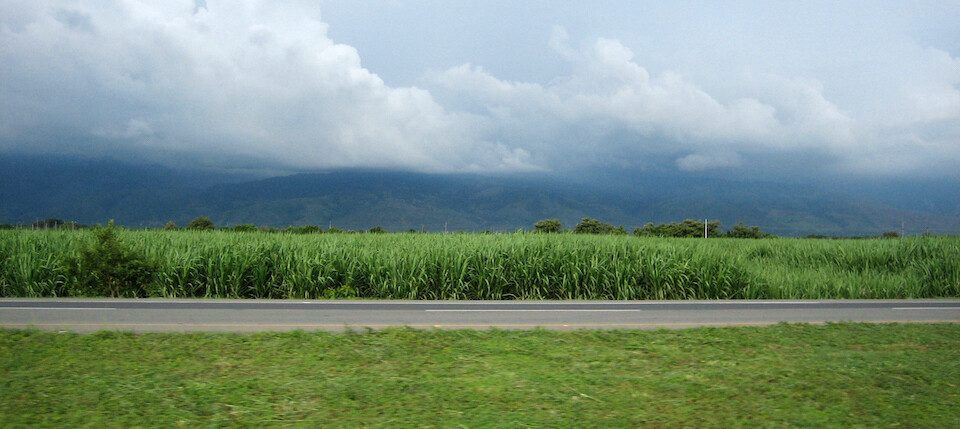
The road descends slowly down to about 1,000 m (3,330 ft) and then becomes a flat 4-lane highway heading to Cali, the third largest city in Colombia. Sugar cane fields with the Cordillera Central rising at the eastern edge of the plain.
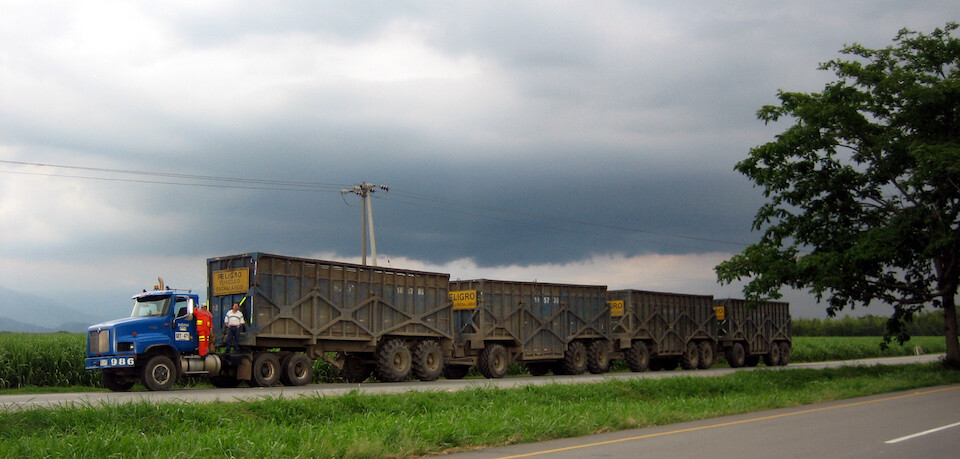
Massive four trailer trucks used for hauling the bulky sugar cane from the fields to the sugar mills.
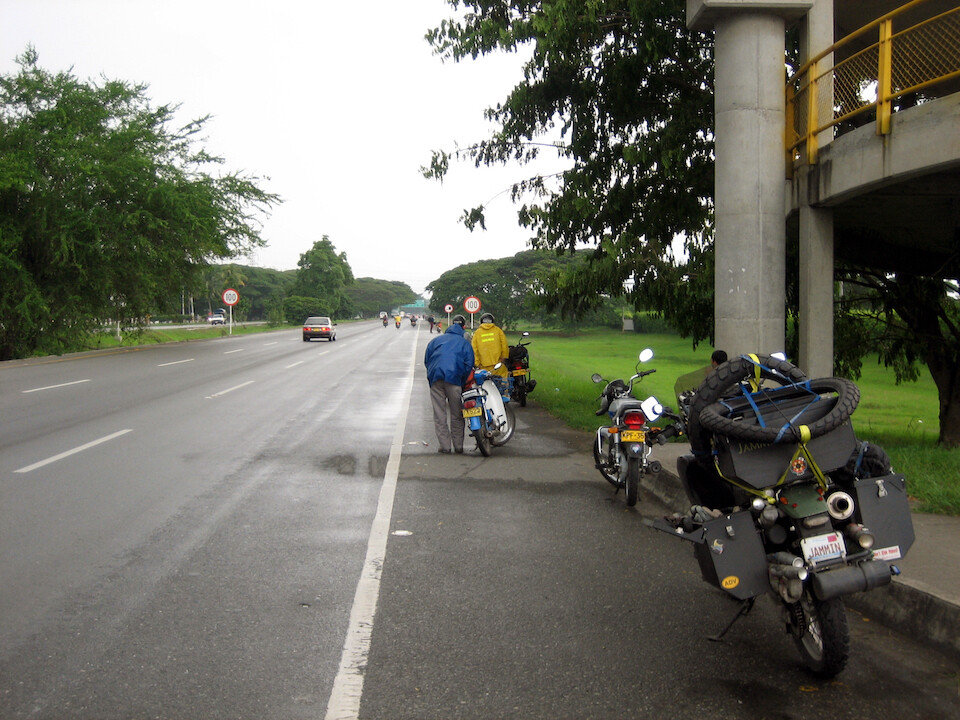
Stopping under a bridge with fellow bikers to suit up for the rain ahead in the city.
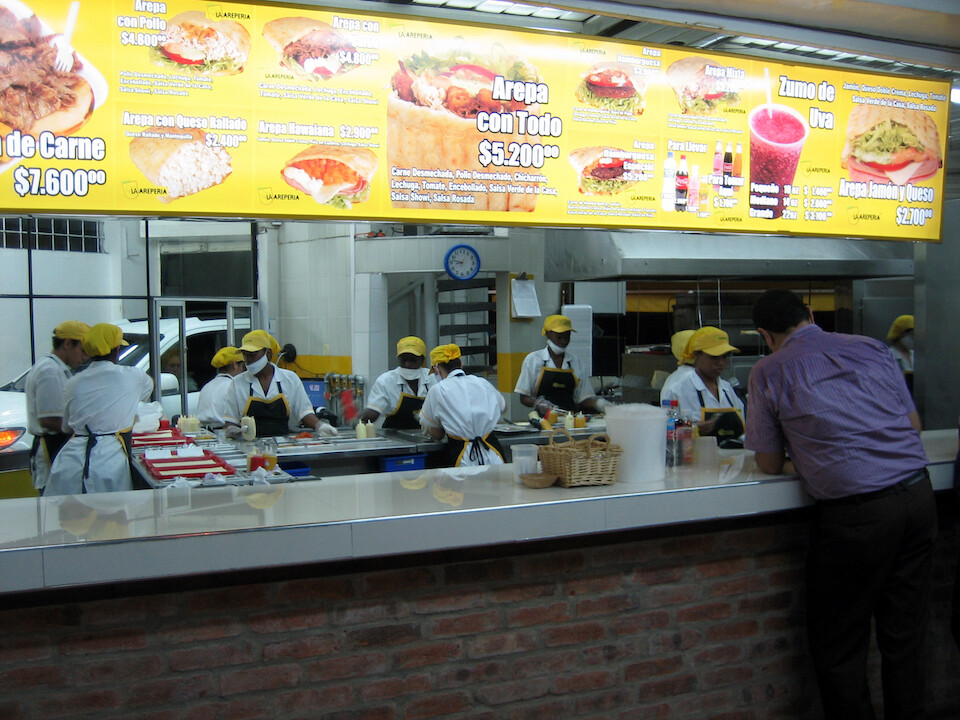
My host, Henry Morales from TouringColombia.com buying dinner at an arepa fast food joint. There's even a drive through.
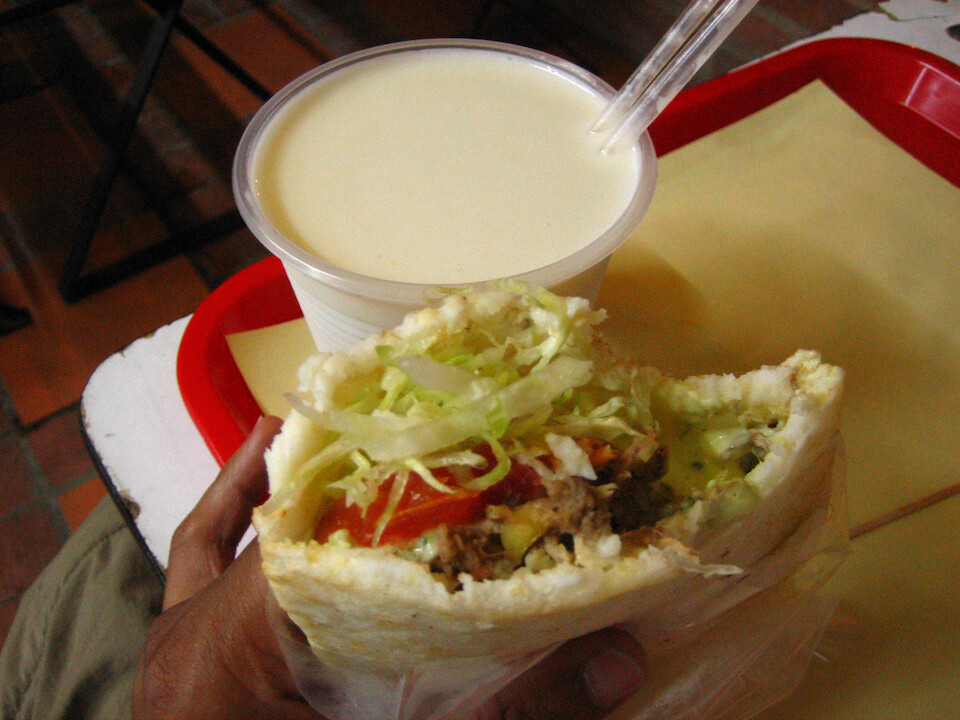
Arepa stuffed with beef and veggies, served with a corn meal drink called Claro, which is funny since it's the opposite of clear. It comes with some honey but wasn't enough flavoring for me, tasted quite bland.
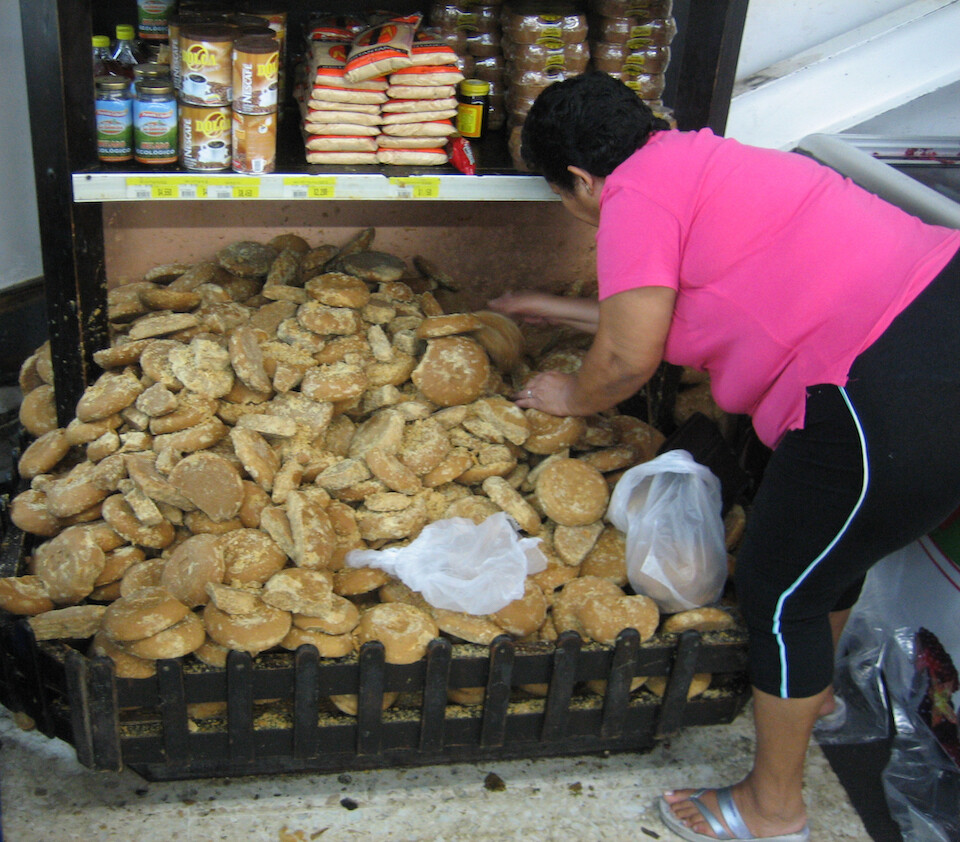
All that sugar cane is processed into Panela, which is an unrefined solid piece of sugar made from evaporation of sugar cane juice. It's big business in Colombia and is mainly used in aguapanela, a drink made by dissolving some panela in water and is widely consumed here. Besides sugar, it also contains good amounts of protein, calcium, iron and ascorbic acid. Cyclists in Colombia (a very popular sport here) usually chew on a small piece of panela for a dose of energy and aguapanela is said to have as many rehydrating minerals as Gatorade. It's also popular in India, under the name of Jaggery.
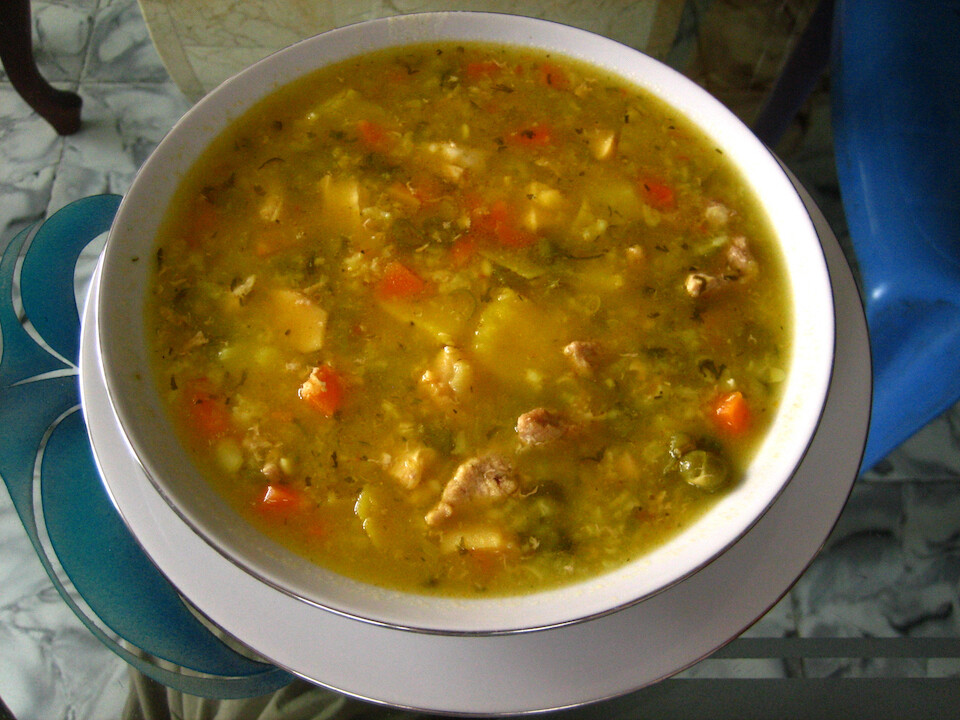
Having lunch the next day at Henry's parent's house of Sancocho de Mondongo, a hearty soup made with beef and pig intestines and yuca and veggies.
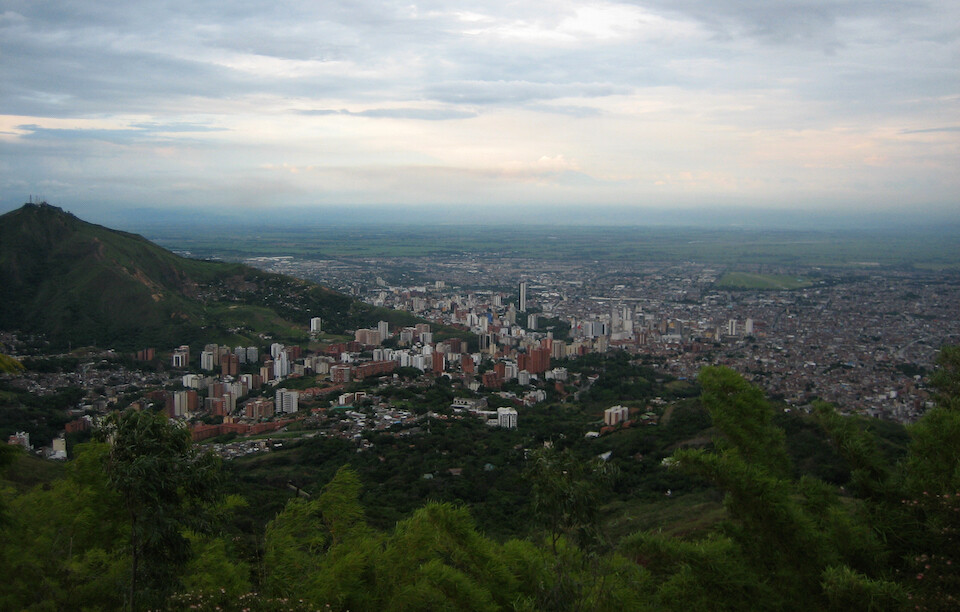
View of downtown Cali looking north at the flat plains where all the sugar cane is grown. While Cali is generally flat, it is still quite hilly since it lies at the foothills of the Cordillera Occidental.

Getting the nice view of the city from the Cristo Rey site, a 31 m (100 ft) tall statue of Christ with open arms, similar to Cristo de Corcovado in Rio de Janeiro.
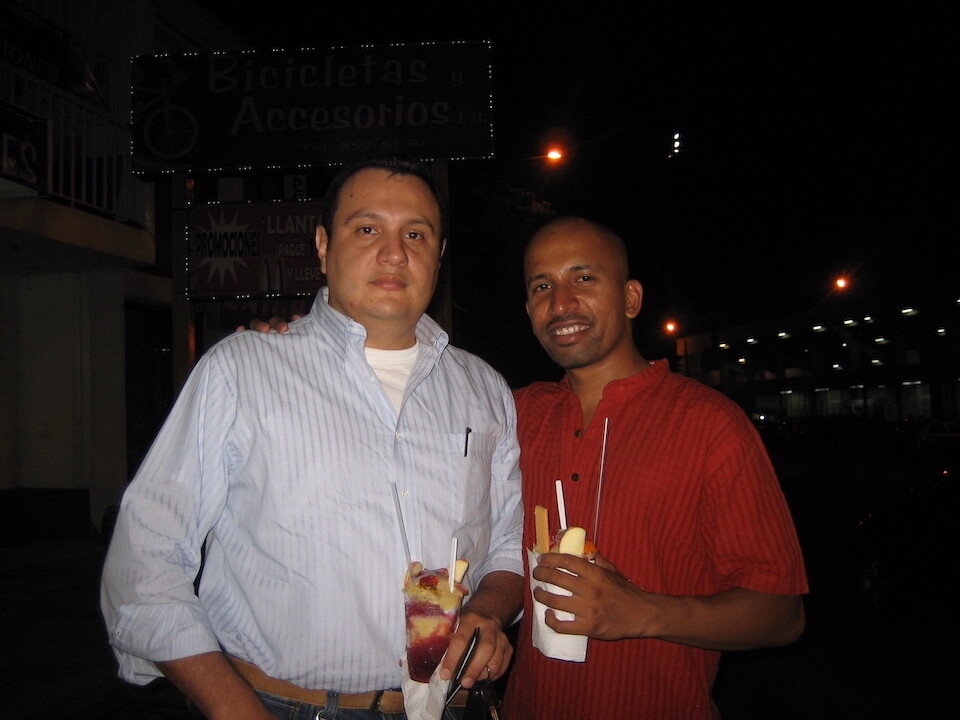
Henry was a great host in Cali. He rides a V-Strom and is getting ready to do a 3 month tour of South America starting in October. He works as an accountant and also manages a super market.
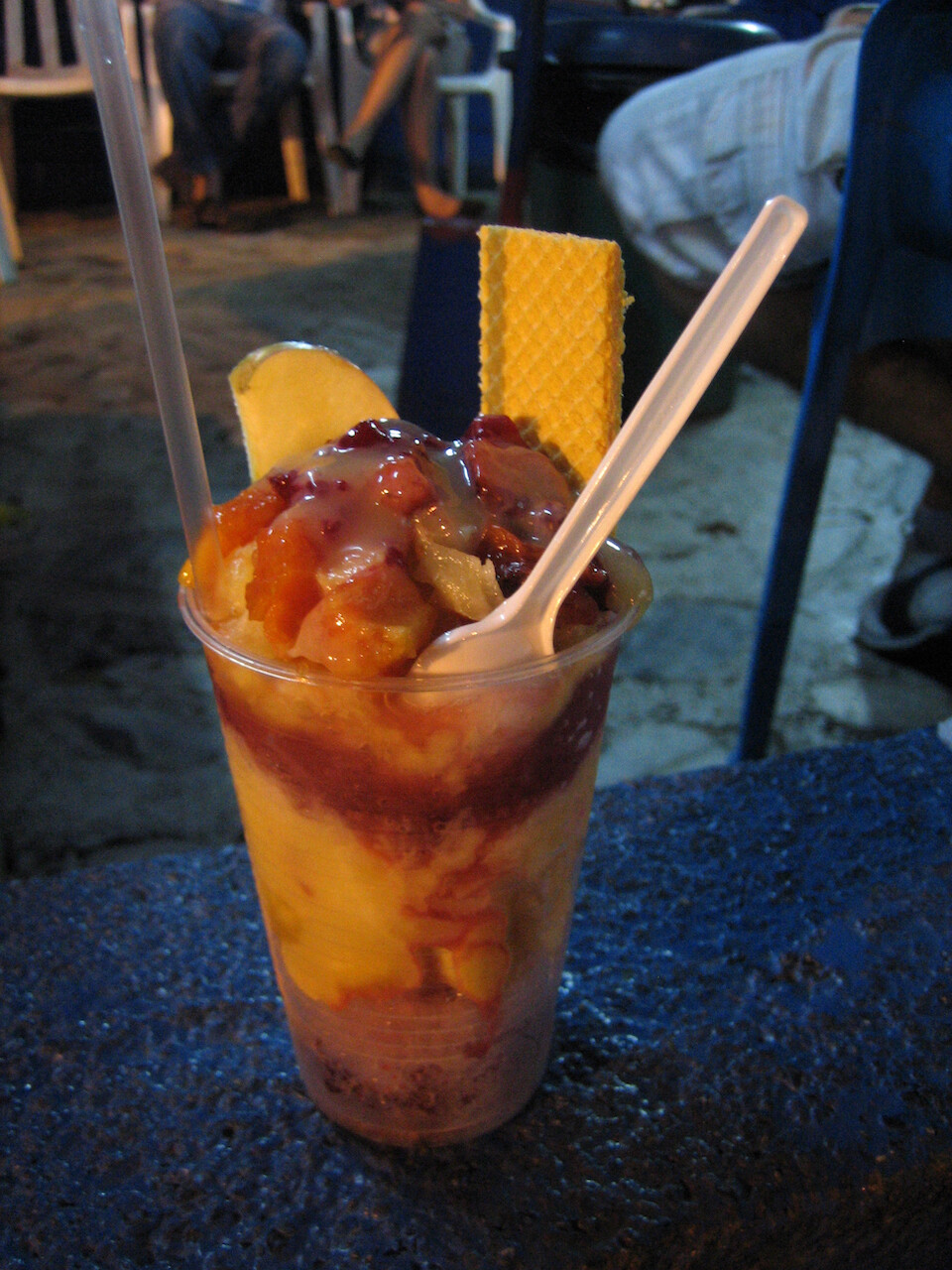
Getting a cholado, a Cali specialty drink of fruit with condensed milk on ice with a wafer; was quite refreshing.
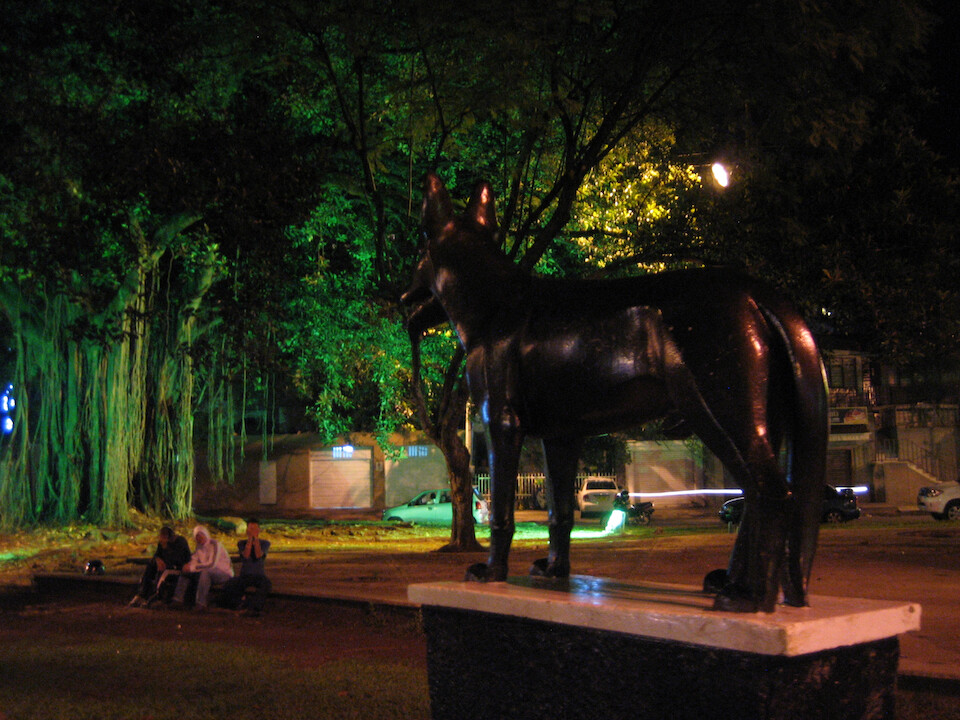
On a tour of the city, we stopped by the Parque del Perro (dog park), which is a popular hang out for motorcyclists and other young adults with restaurants and bars around. It gets its name from this statue of a dog but it's not really a dog park as one might think of in the States where dogs are allowed to run free.
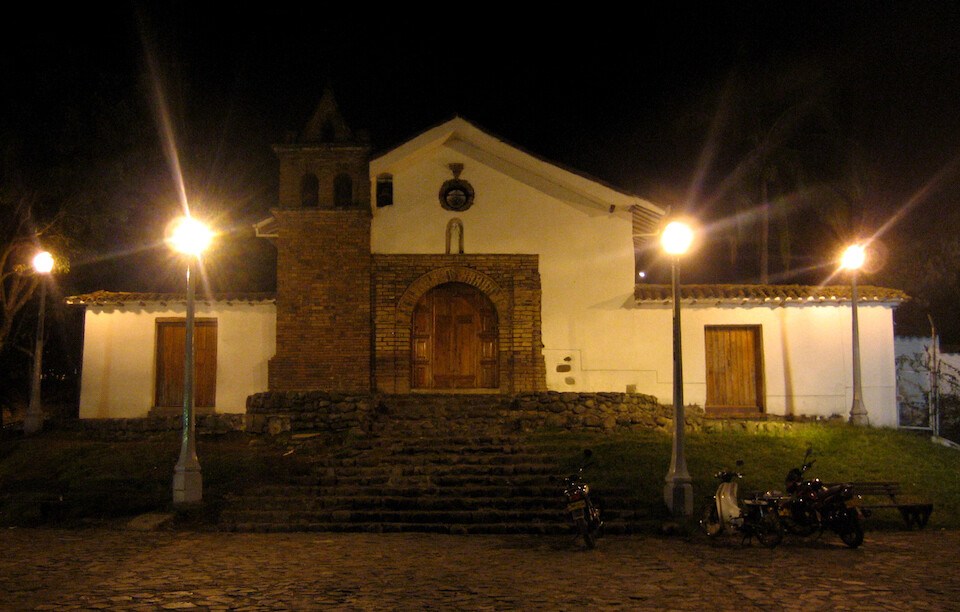
Iglesia de San Antonio in the oldest neighborhood in the city, located on a hill with a pleasing park leading up to the church.

View of downtown Cali from the Iglesia de San Antonio. Some free spirits were hanging about, playing soft guitar music and creating a nice ambiance.
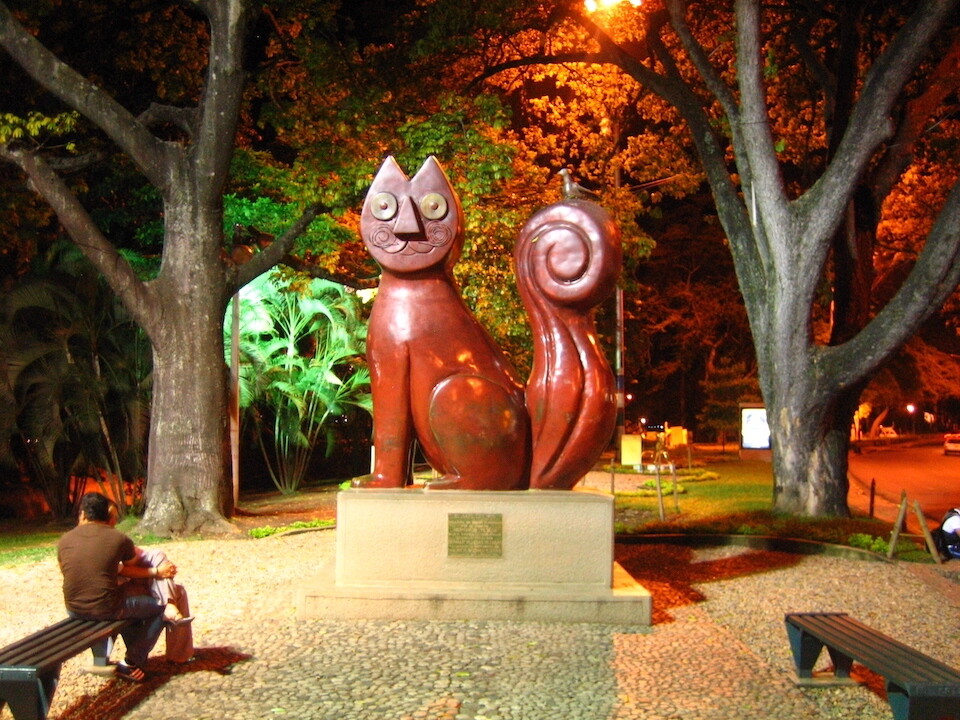
Along with the dog park, there's a Parque del Gato (cat park) located on the Cali River, a peaceful part of the city.

There were various sculptures of cats, each dressed up in a funky way.
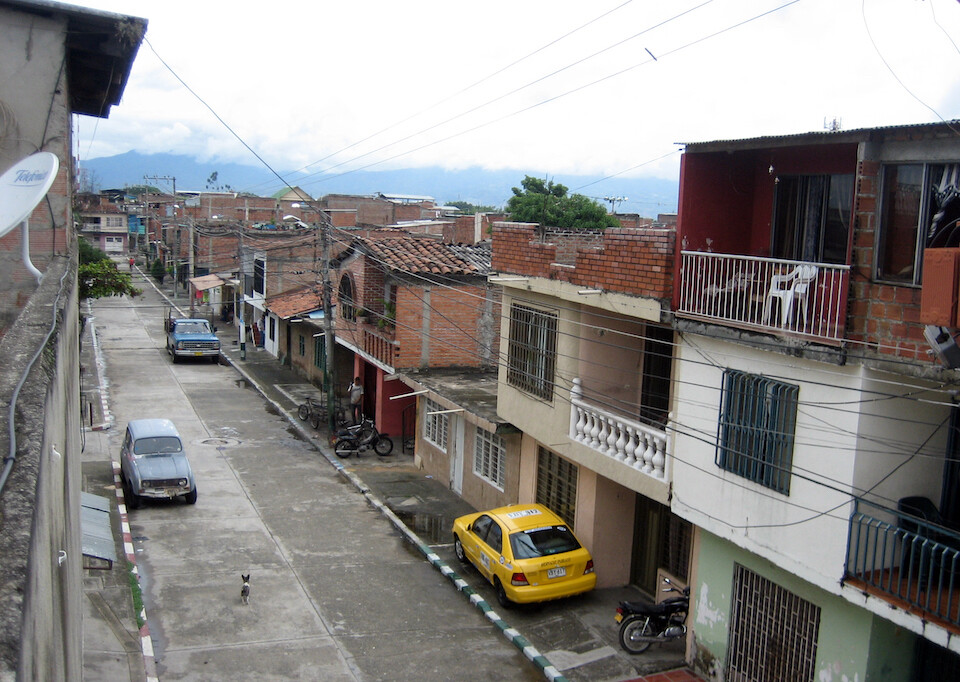
The working class neighborhood of Henry's parent's house, where I was having lunch before heading out for Popayán.
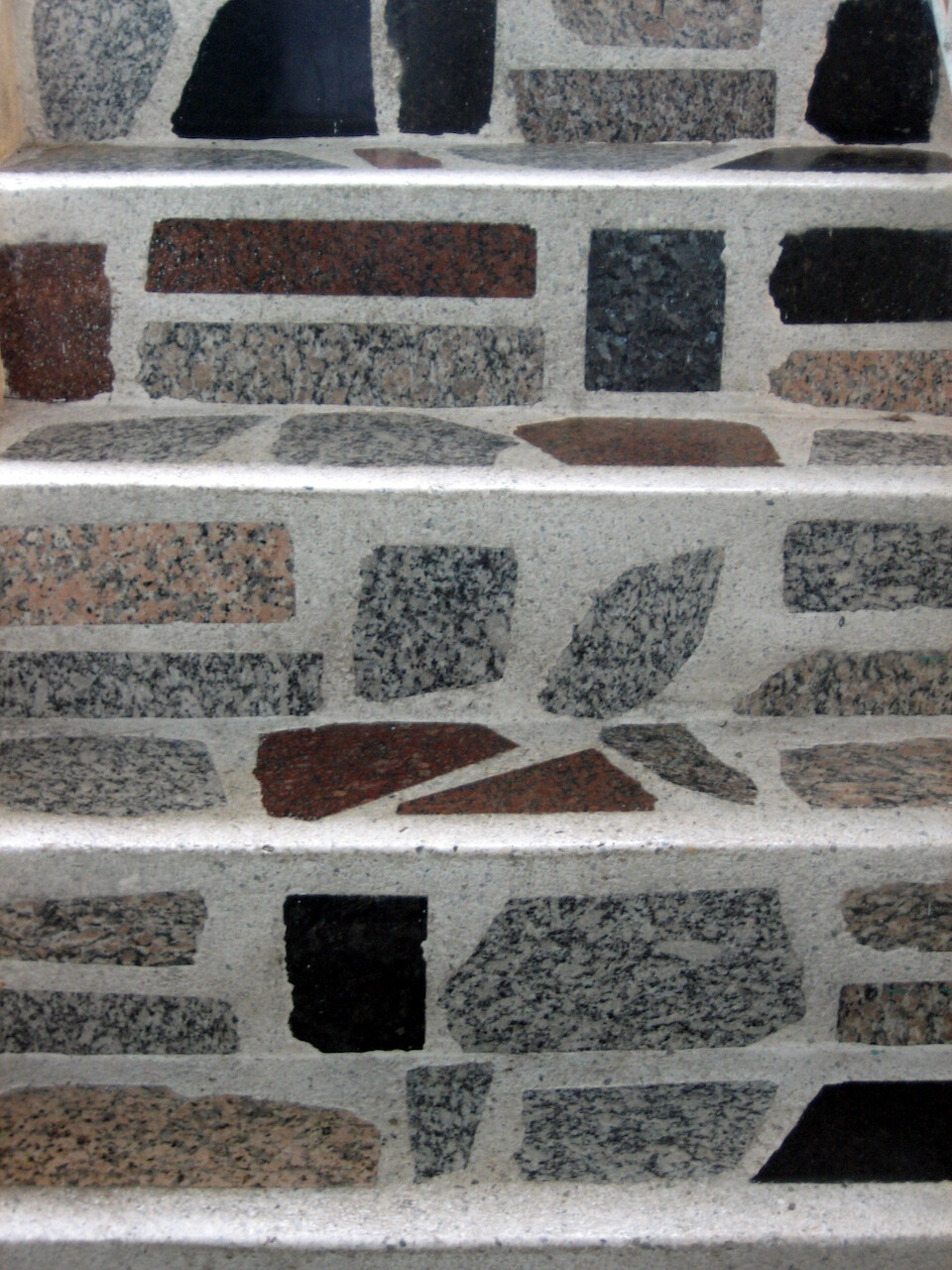
Mosaiced steps leading up to the terrace.
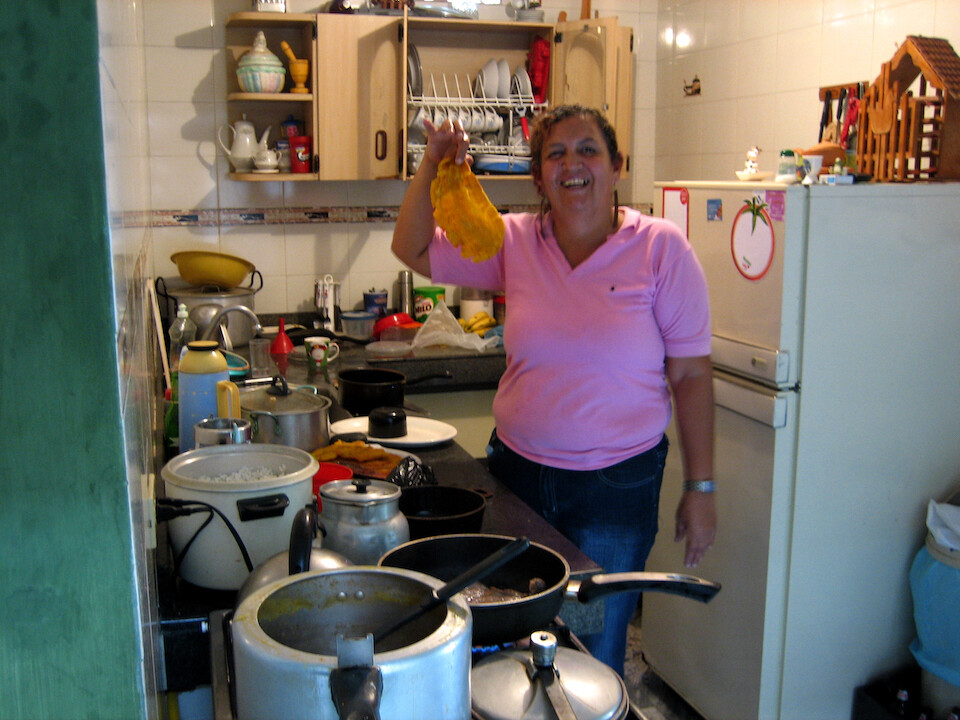
Henry's wonderful mother making huge patacones for me after seeing that I liked them the previous day.
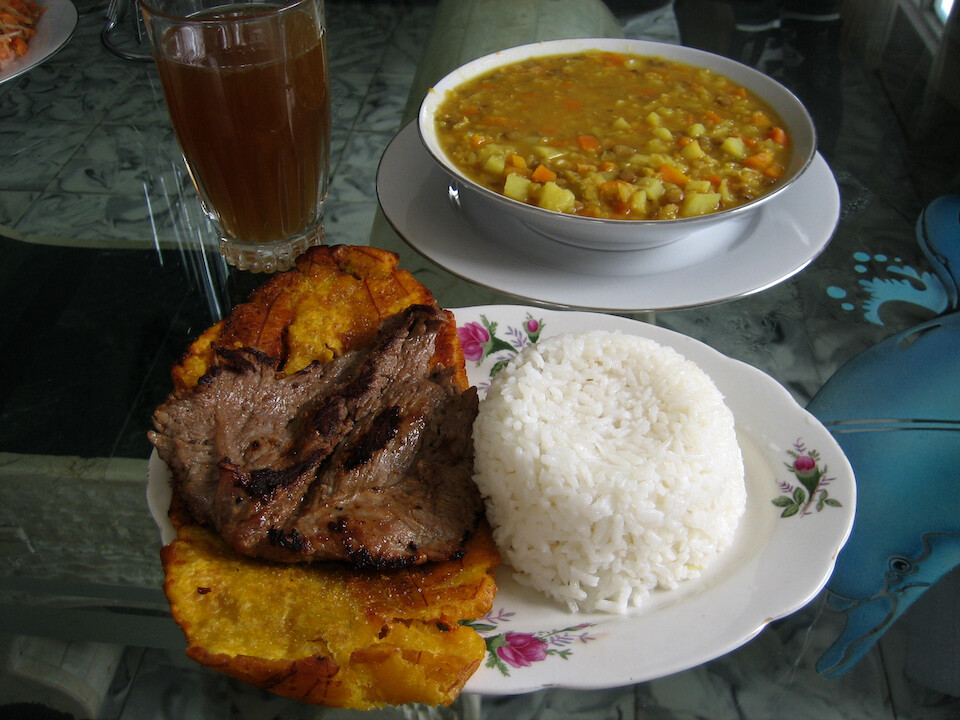
They asked a lot of questions about India the previous day and people generally want to find out what food is eaten in other cultures and I told them we eat a lot of rice with lentils (dahl) and so Henry's mother made lentil soup here. So gracious of her. Along with that was rice with steak and huge patacones served with aguapanela. She even wrapped some extra patacones for me to snack on while on the road.
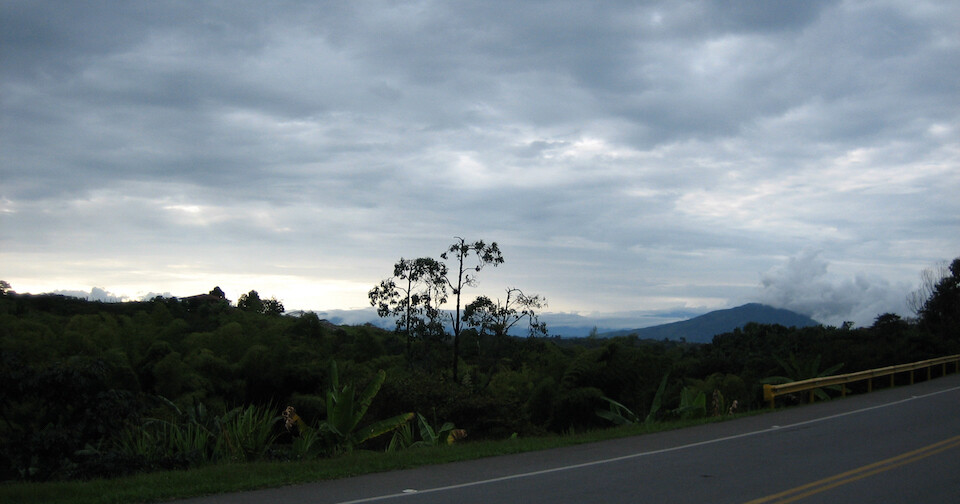
Heading up to Popayán, about 140 kms (85 miles) away.

Nice twisty roads climbing back up the mountains.
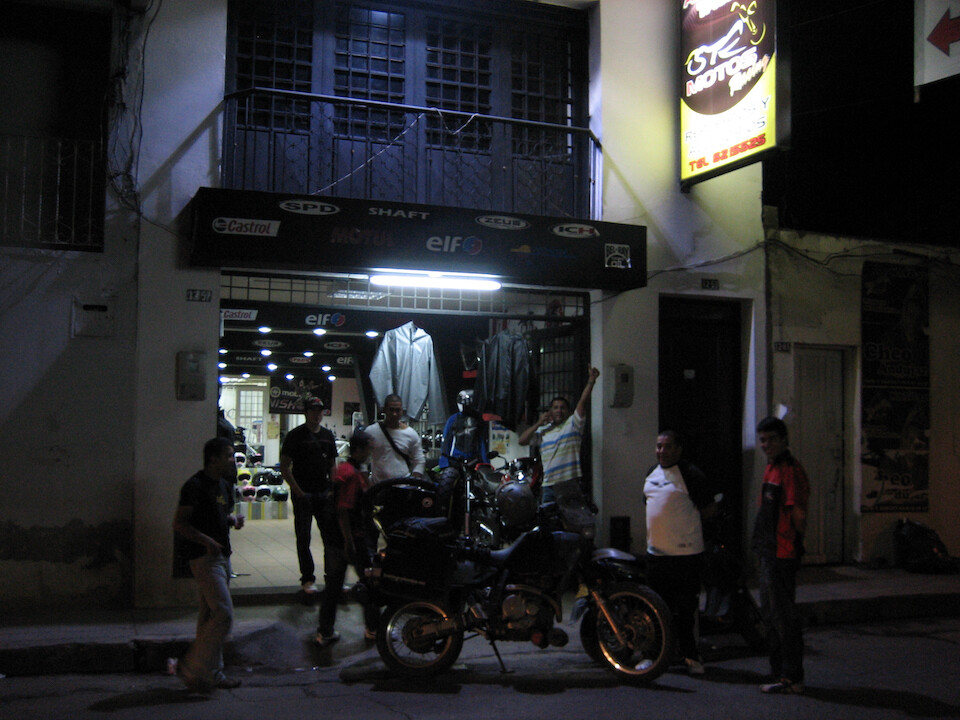
Meeting up with Fernando Alarcon in Popayán, a friend of Jorge Peto in Armenia, at his brother's motorcycle accessory shop.
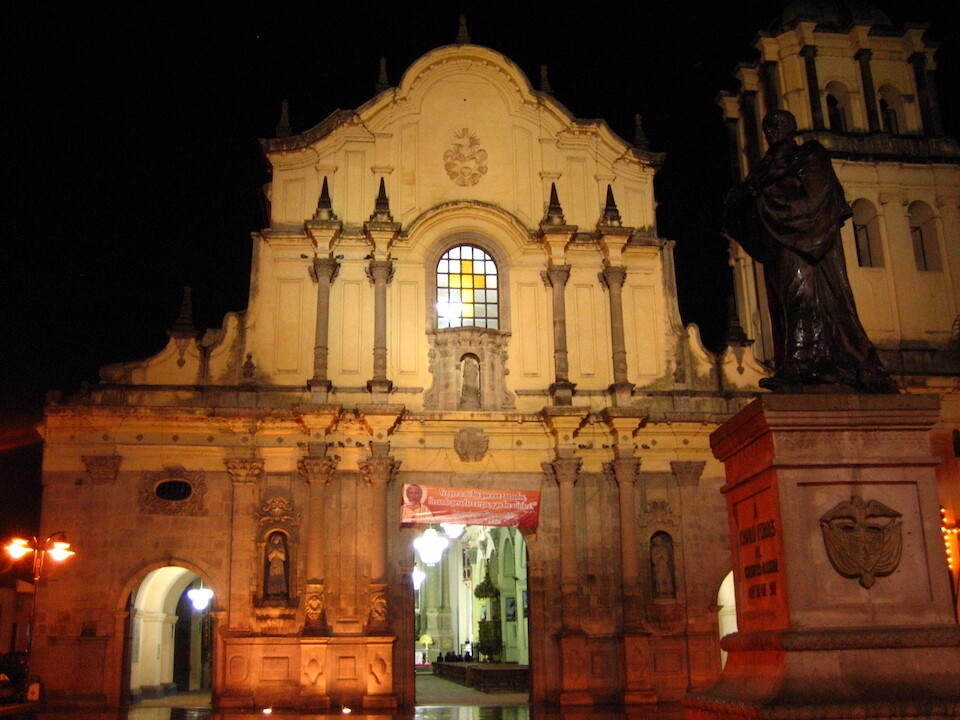
Getting a tour of the colonial architecture of Popayán. Iglesia de San Francisco, considered the best example of baroque style throughout Colombia along with a monument to local hero, Camilo Torres.

The handsome cathedral in the central Parque Caldas. Popayán was founded in 1537 and was an important political and cultural center. All its fabulous architecture was destroyed in an earthquake in 1983 and since then all the major buildings have been restored.

The facade of the Catedral Basílica Nuestra Señora de la Asunción.

The white-washed buildings reflecting in the wet pavement.
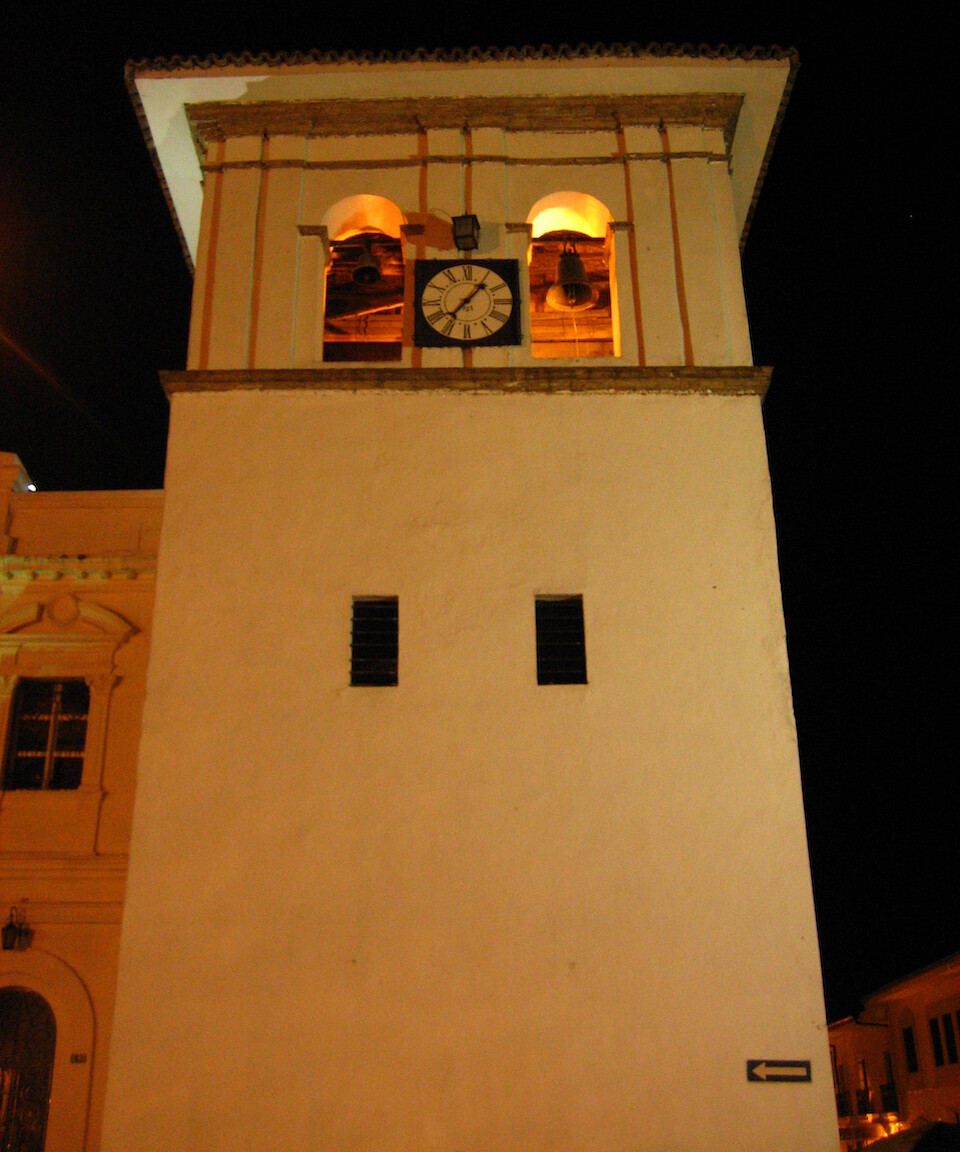
The main symbol of Popayán, the clock tower, dubbed the nose of Popayán, built in 1682.
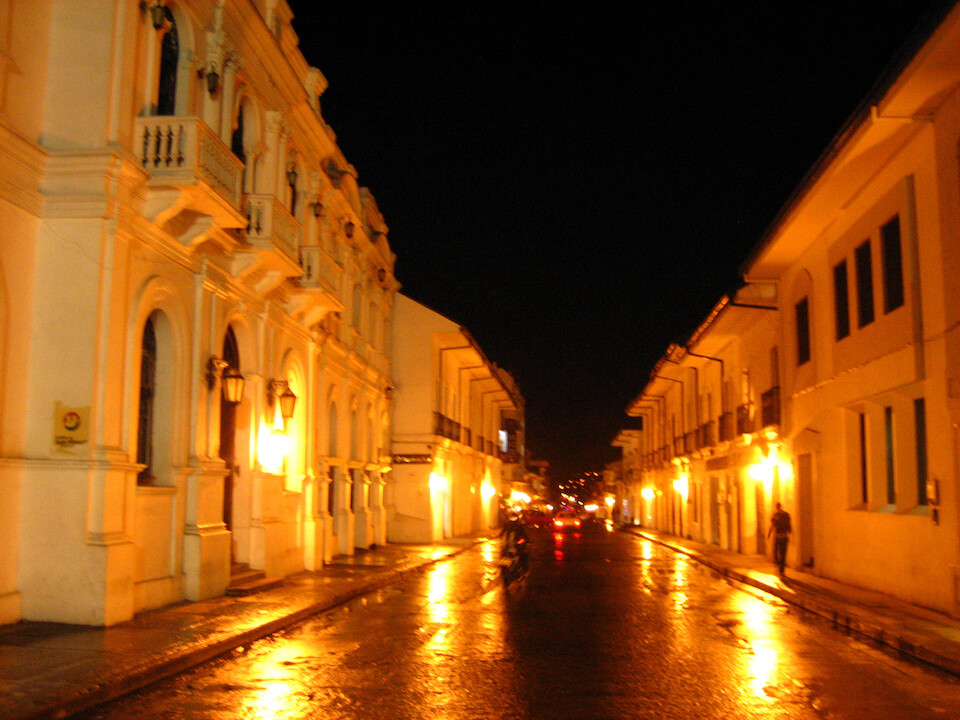
What's special about Popayán is that all the buildings are painted white.
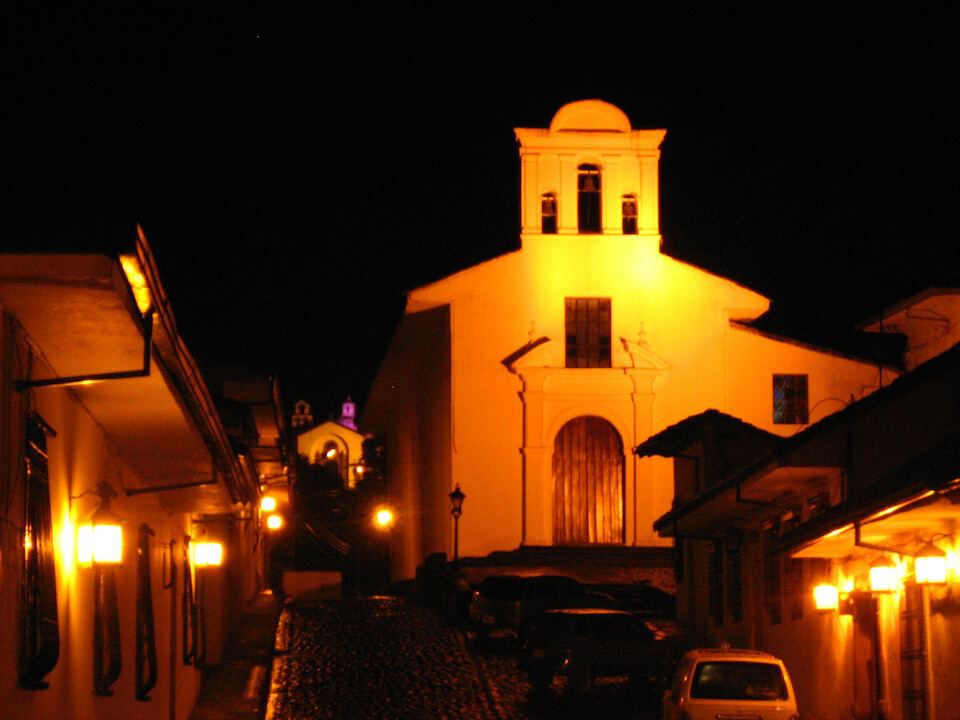
Iglesia de la Encarnacion and Iglesia La Ermita in the back with the purple lighting.
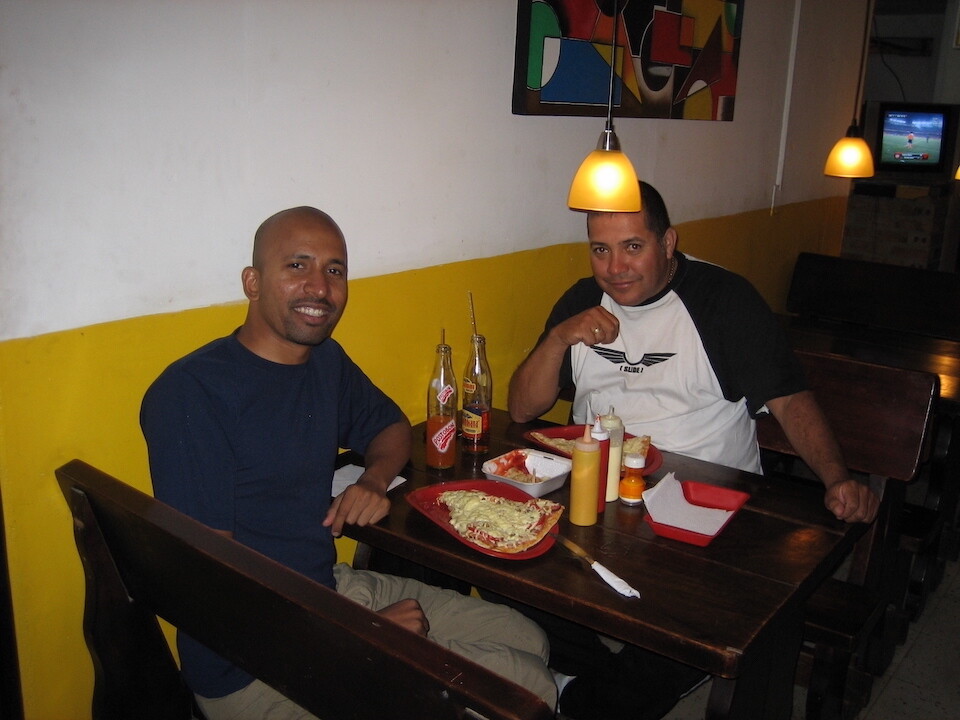
Fernando has a few pizzerias around town and also runs a few hotels. He, too, rides a V-Strom and went on a month long tour of the Mediterranean coast of Europe.
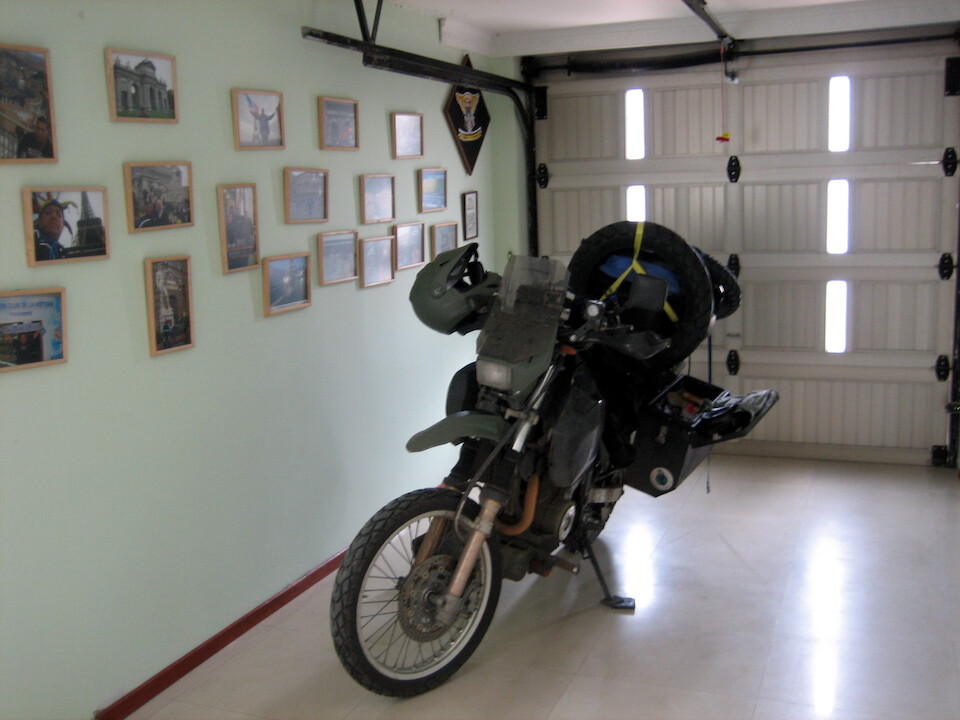
sanDRina in Fernando's garage that opens up into his living room, nicely setup. All the pictures on the wall are of his tour in Europe and other biker events around Colombia.
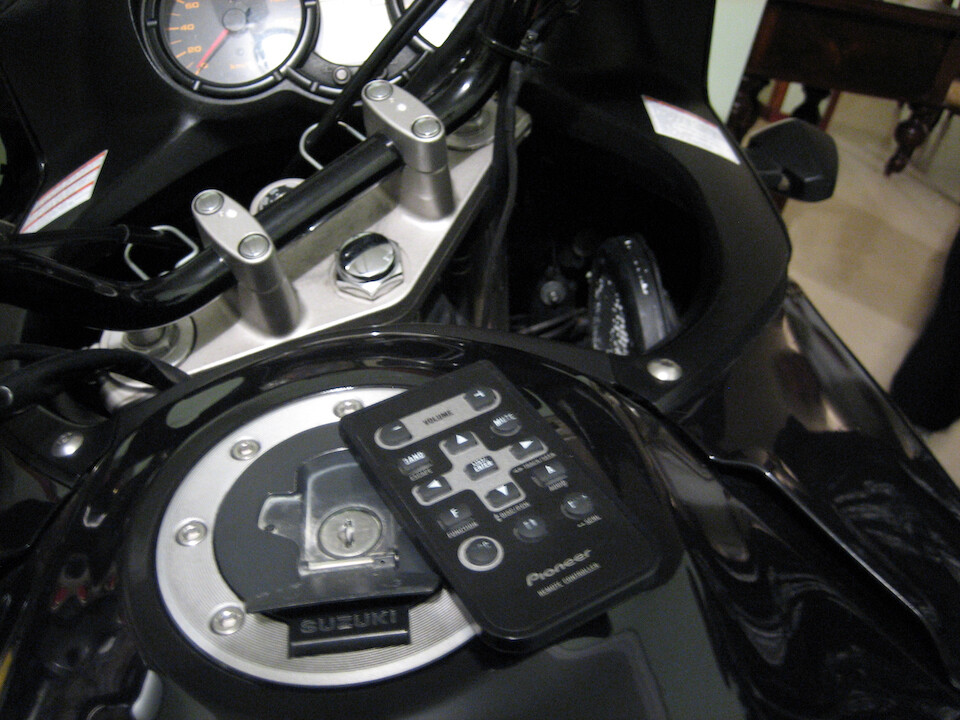
After seeing all the electrical work on my bike, he showed me his crazy car stereo that he's hooked up to his V-Strom with 6-inch loud speakers inside the front fairings and tweeters mounted on the windshield. It's even setup with an infra-red remote control. He says it's nice to have music when they gather for bike events. Crazy, but very cool.
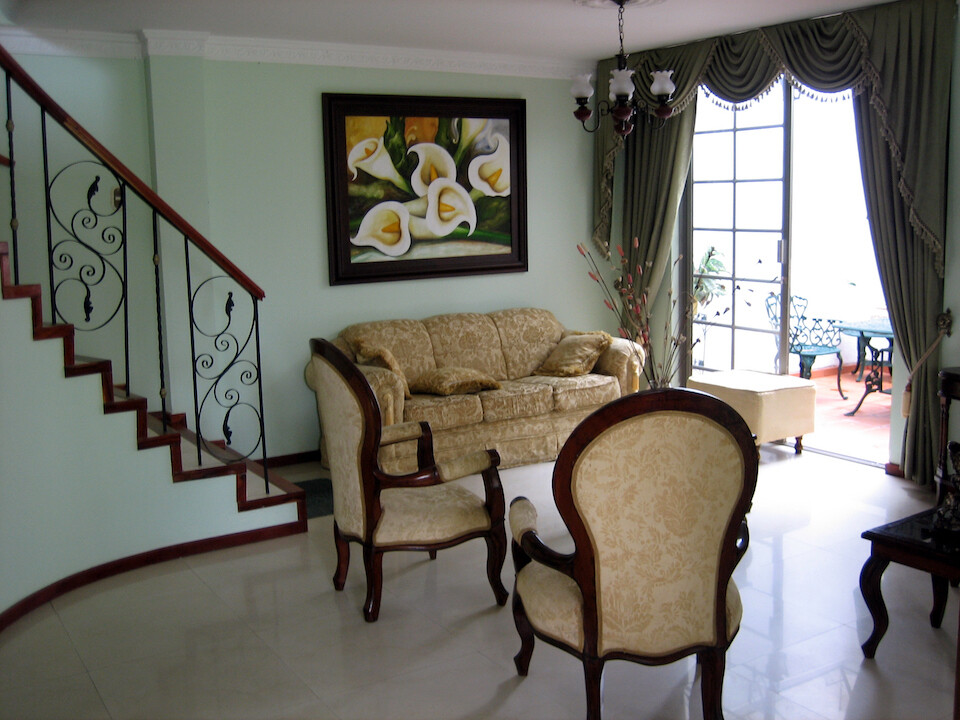
Fernando's lovely house. His wife painted that painting above the sofa.
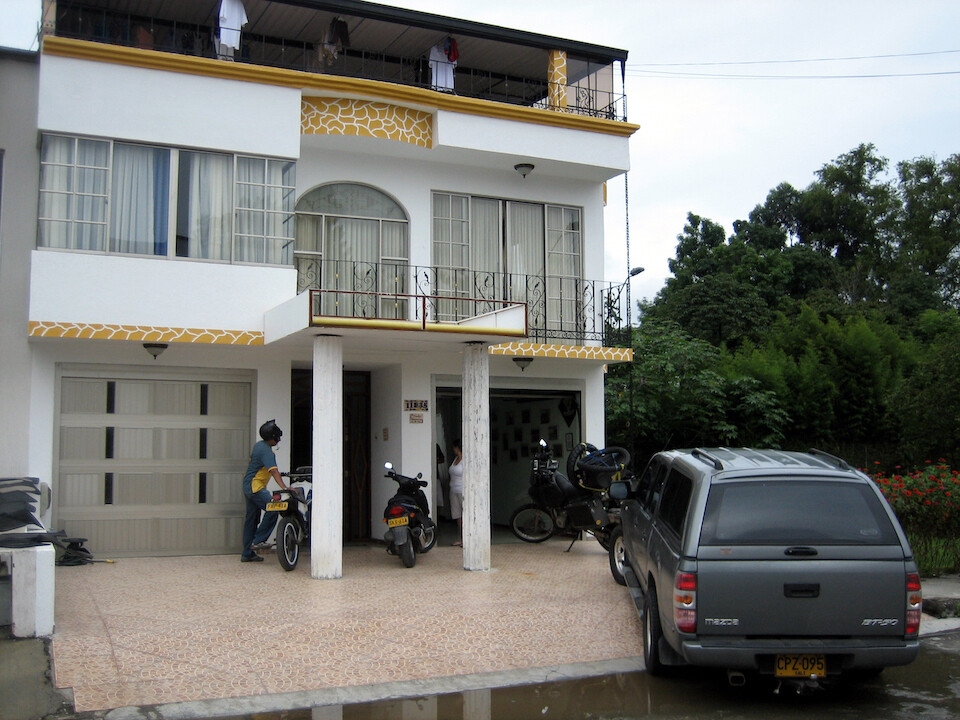
Leaving Fernando's house the next morning.
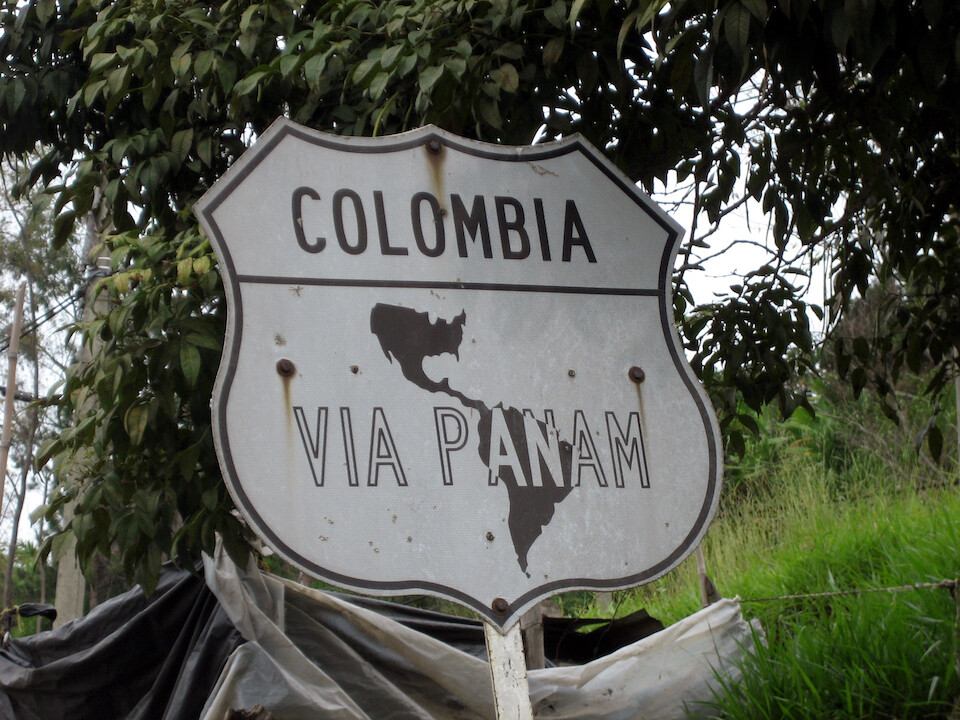
I've been mostly on the Pan American Highway through Colombia.
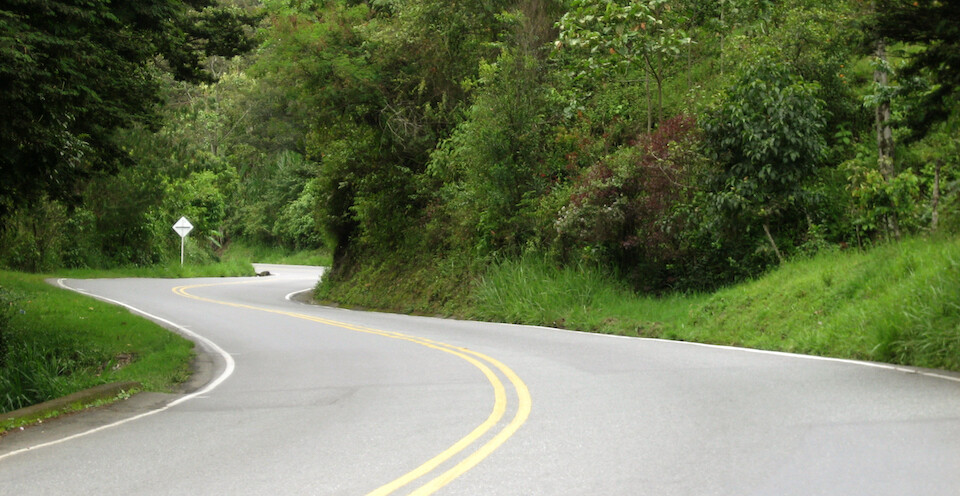
Twisty roads heading up to Pasto, about 265 kms (165 miles) south.
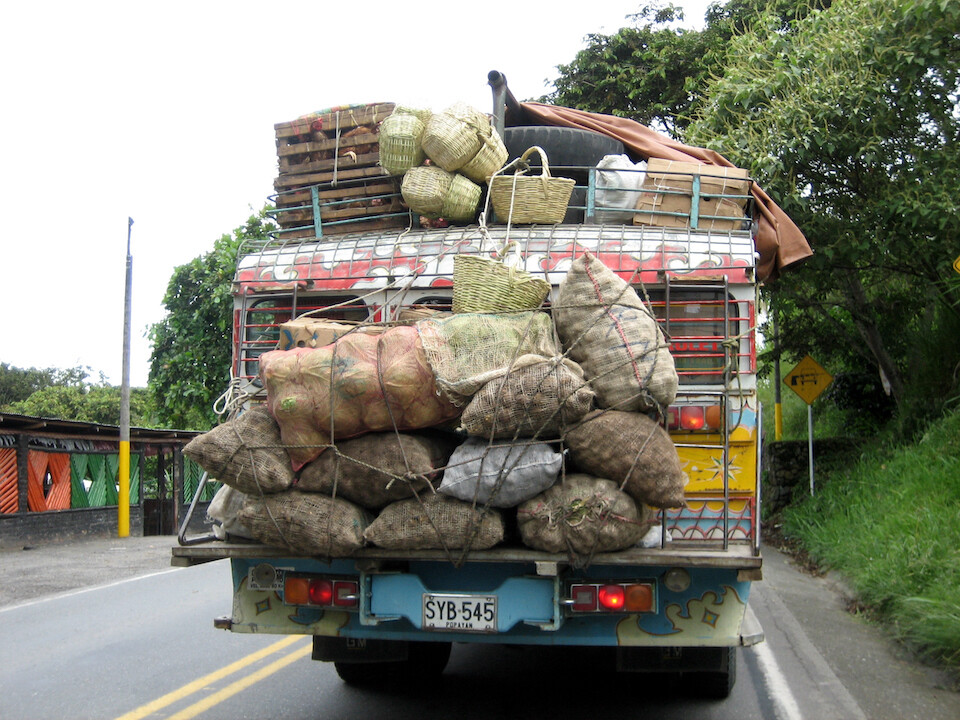
Local bus with loads of potatoes and chickens strapped on the roof.
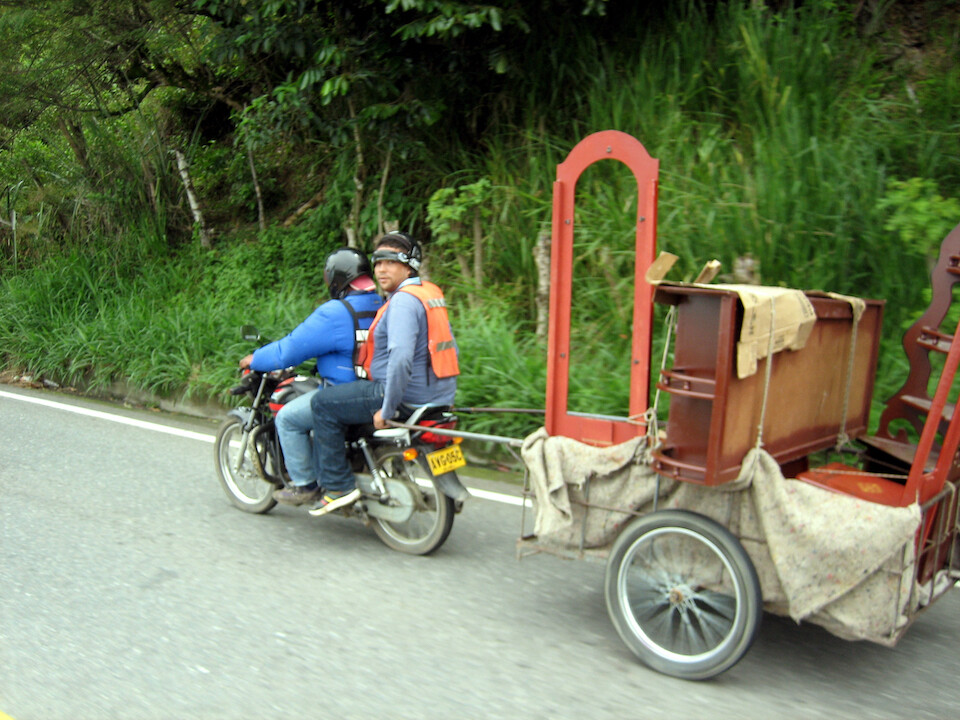
Ad hoc motorcycle trailer. The passenger is just holding onto the cart and check out his helmet-wearing style. Helmets are required by law in Colombia, but how you wear it is another matter. Looks like some people don't like to wear helmets, so they just place them on their head, out of the way.
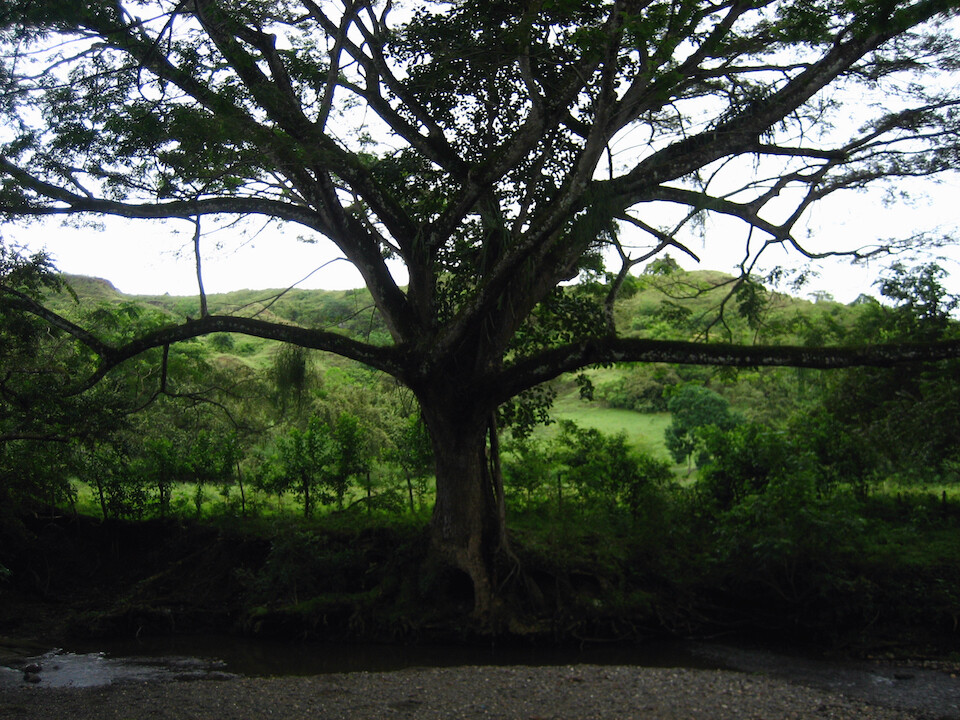
A multi-branched tree at a small break by the road side.

The scenery becoming more impressive as I neared Pasto.
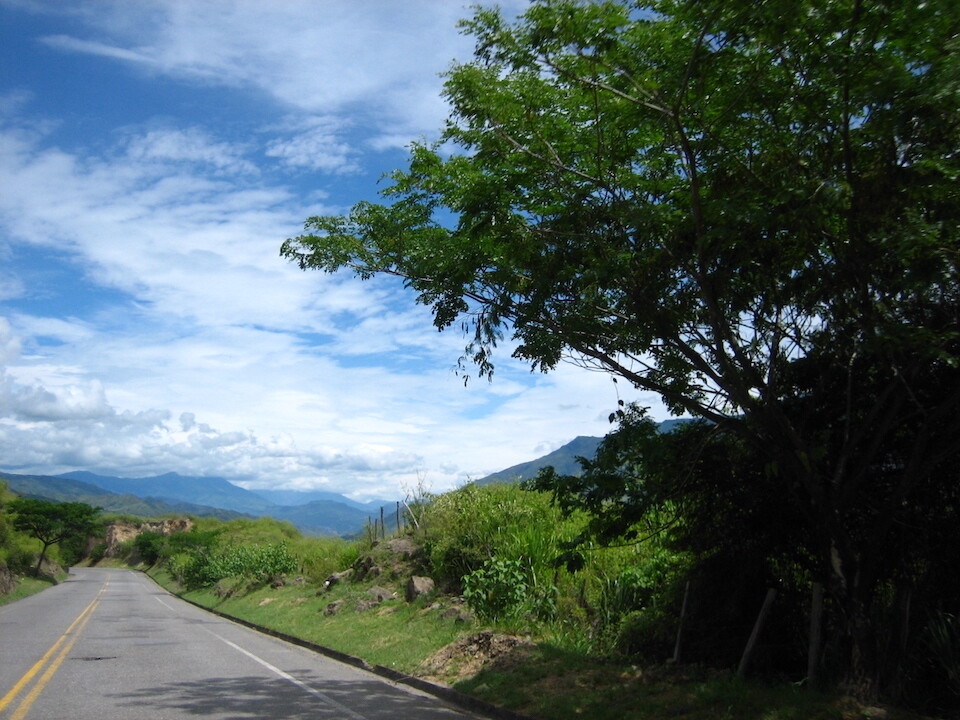
Vivid skies with Pasto in the mountains ahead.
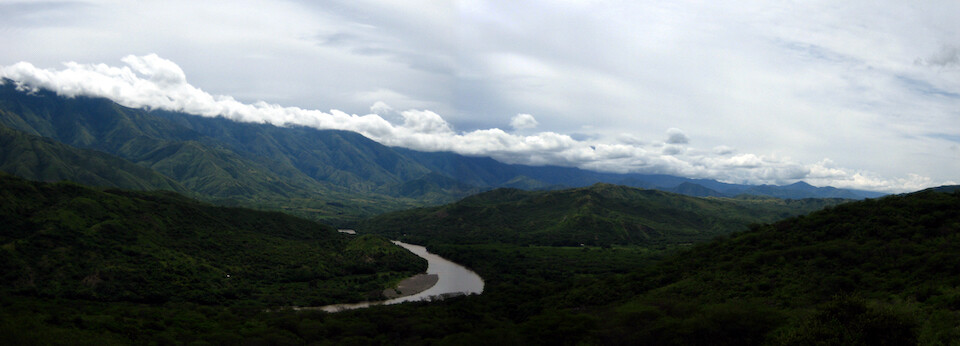
This image is level with the horizon, but note how the clouds follow the top of the ridge as it descends.
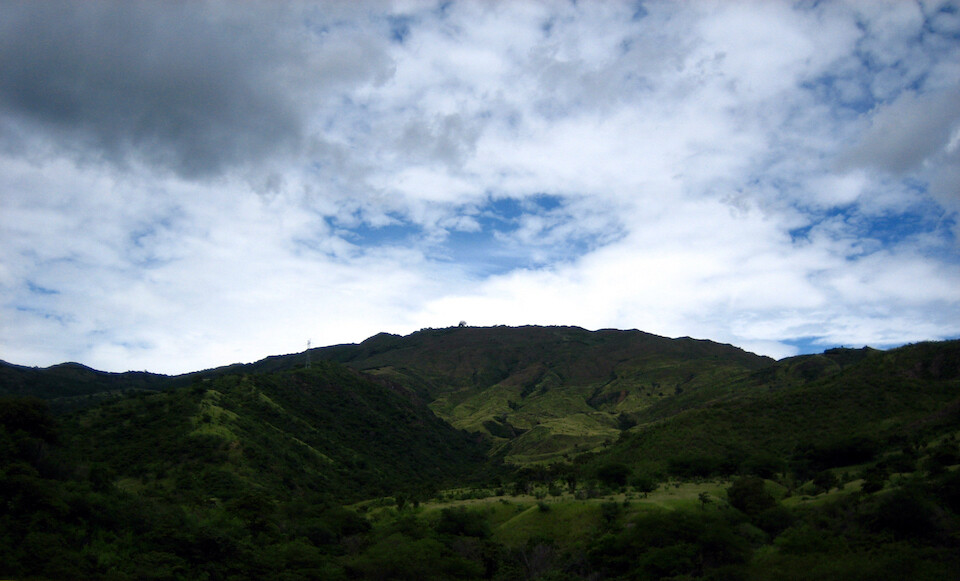
Pleasing scenery on the way to Pasto.
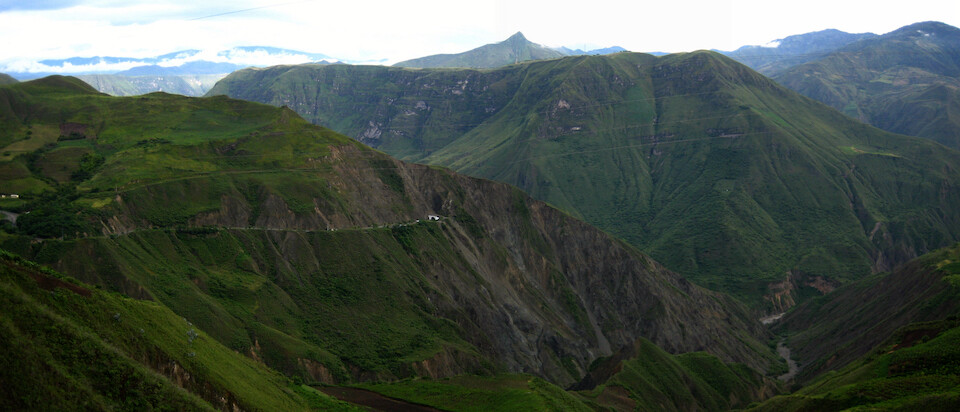
Deep, rugged canyons on the climb up to Pasto.
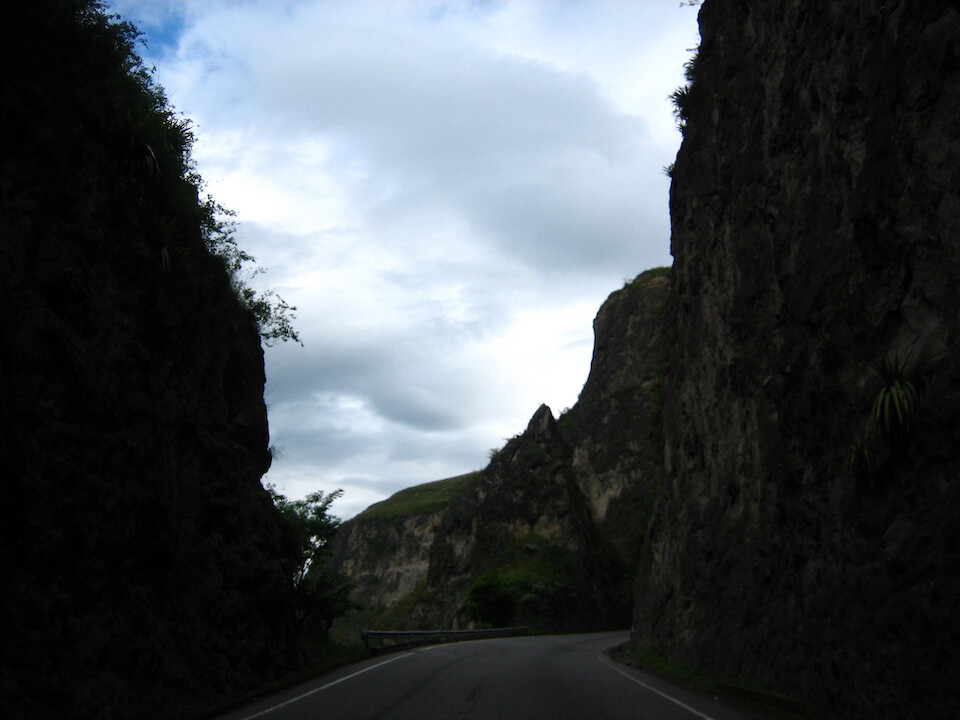
The road was very impressive, hugging steep cliffs and cutting through rock passes.
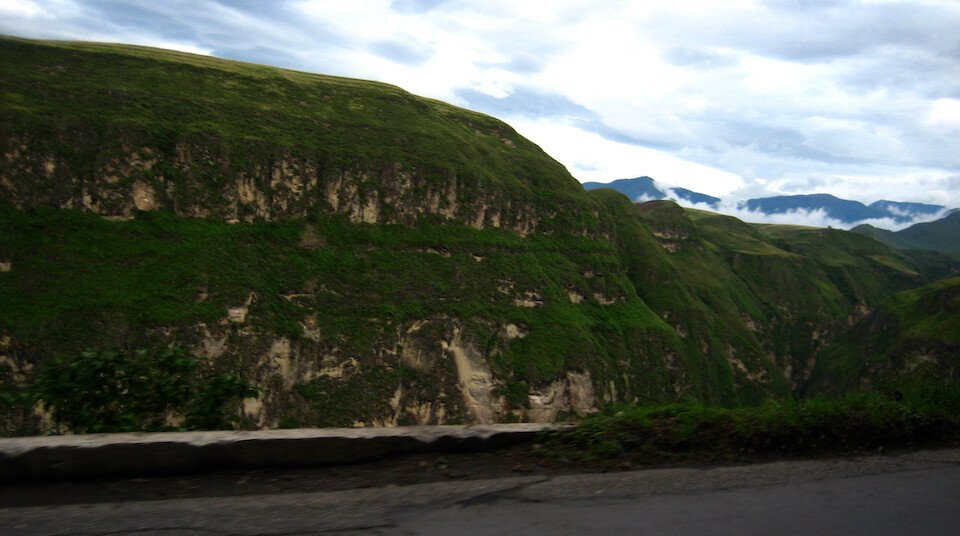
Steep canyons, nearing Pasto.
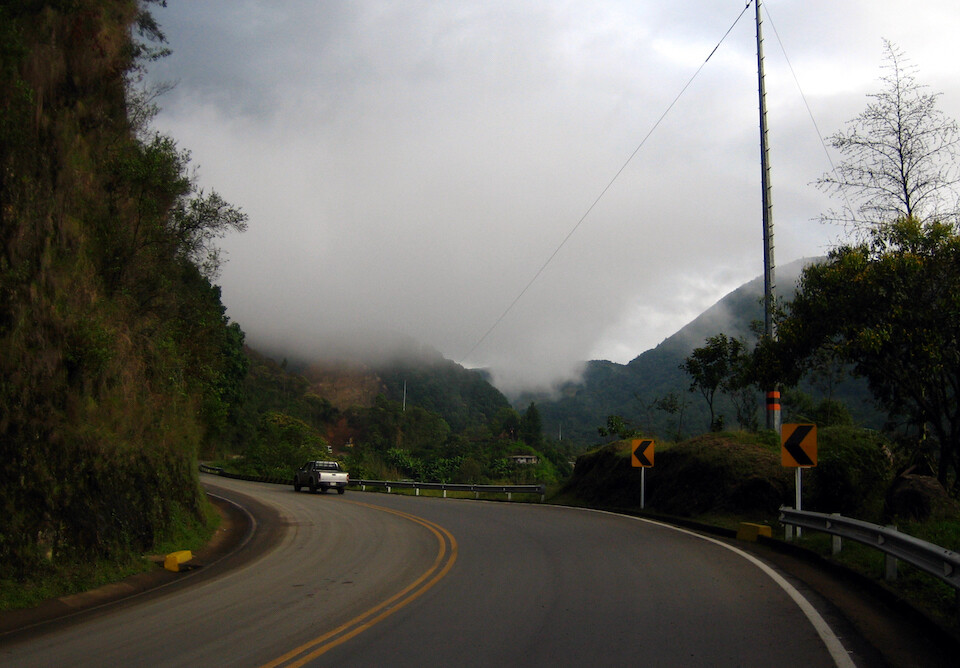
The weather changed into cold rain as the altitude neared 3,000 m (10,000 ft).
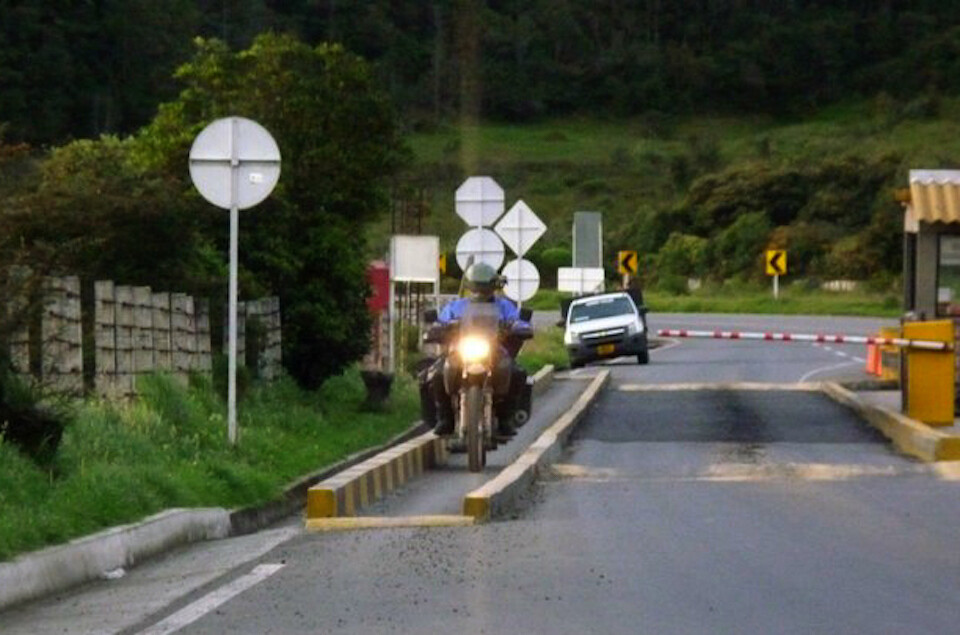
Crossing the last toll booth to Pasto and...
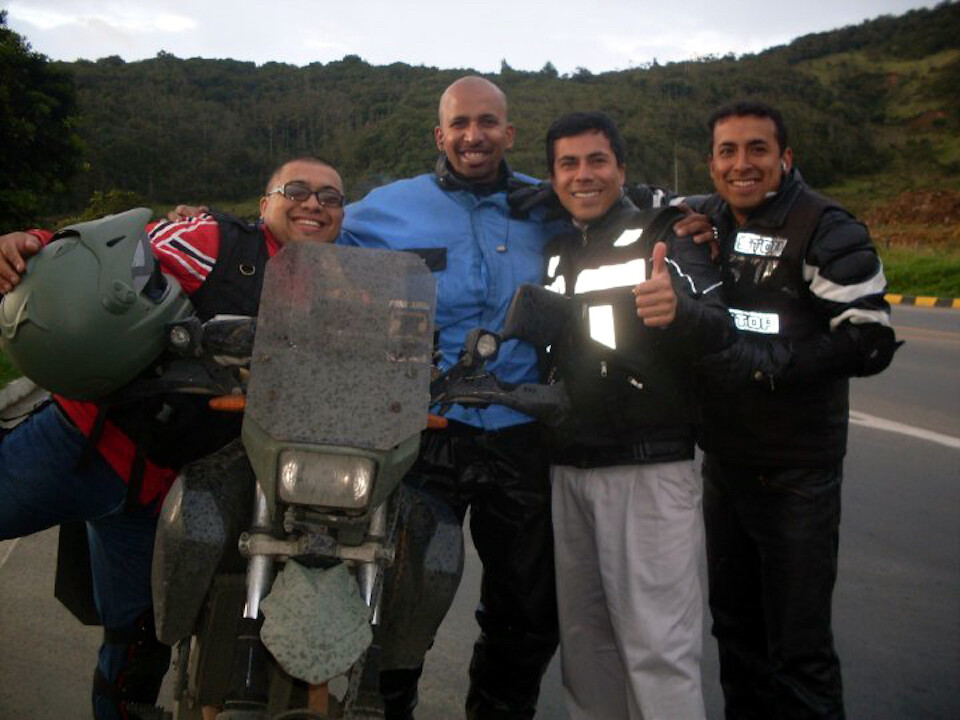
Being welcomed by the local motorcycle crew of Pasto. Dario Fernando, whom I stayed with in Medellin, is from Pasto so he informed all his friends that I was passing through. L-R: Andres, me, Raul and Edwin.

The guys were very welcoming and wanted to show off their sights. Here, we're taking a quick picture of the volcano that looms over the city. They're all on small bikes, 200cc and less and were worried they would be too slow for me, but it was just right as I'm riding slow anyways (around 90 kmph, 56 mph).
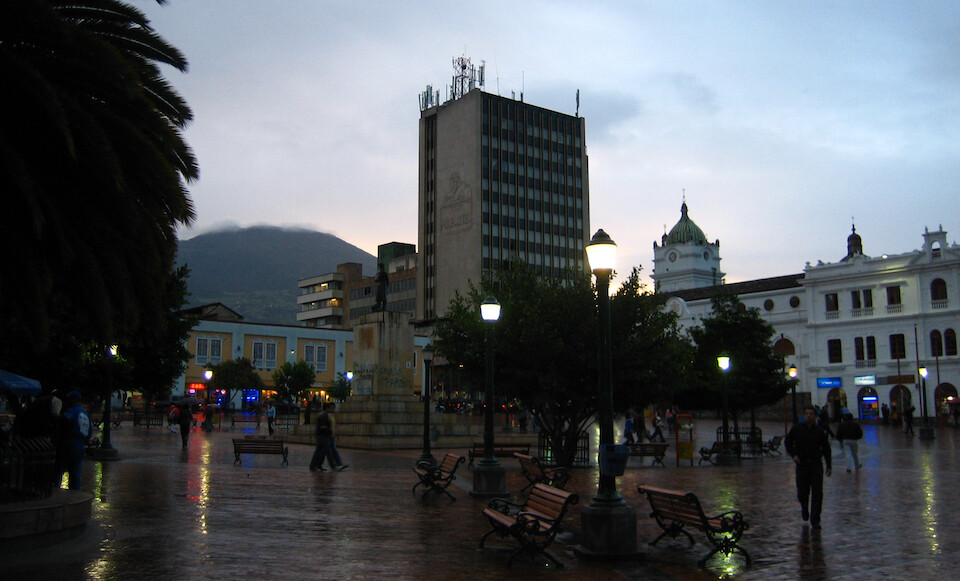
The main square in Pasto with the volcano looming in the back. It erupted earlier this year but didn't cause any damage.
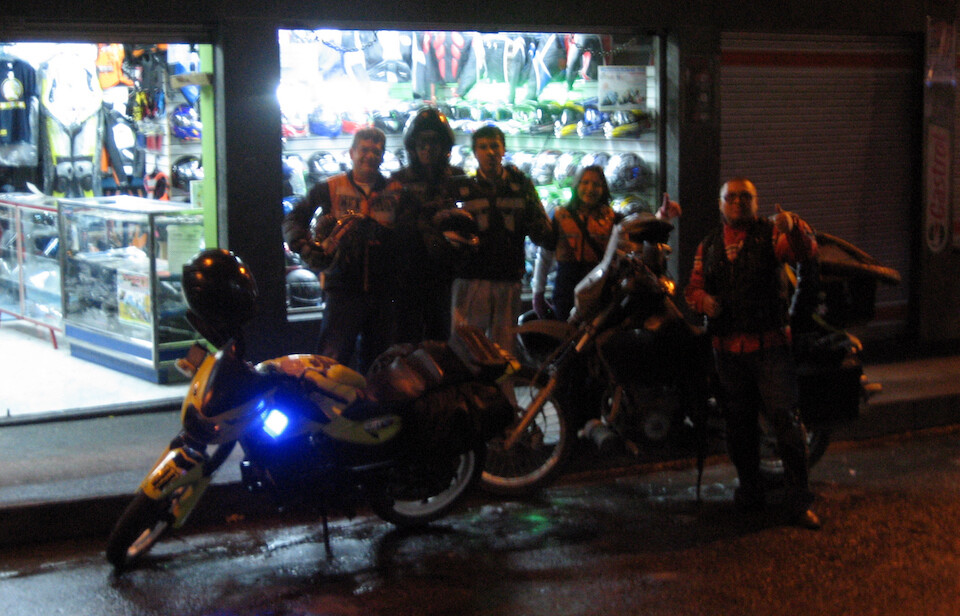
Andres, in the black vest, was riding the lead Baja Pulsar and since he works part time with the police in community-related events, he had flashing police lights along with the police horn on his bike. It made easy work of cutting through traffic. Here, he's helping me buy some local chain lube for USD 2 as I know it's going to be more expensive and harder to find further south. L-R: Ivan on a green Pulsar, Edwin on a dirt bike, Raul on a Suzuki GN125, Angela (Andres' girlfriend who spoke some English) and Andres.
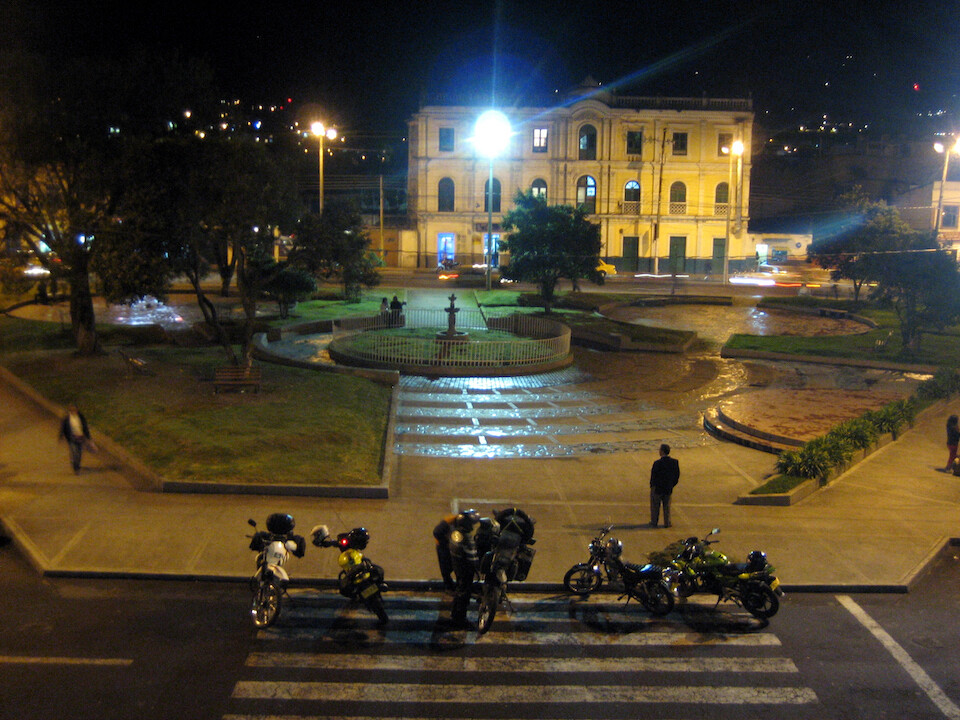
Stopping by a church that overlooked this park.
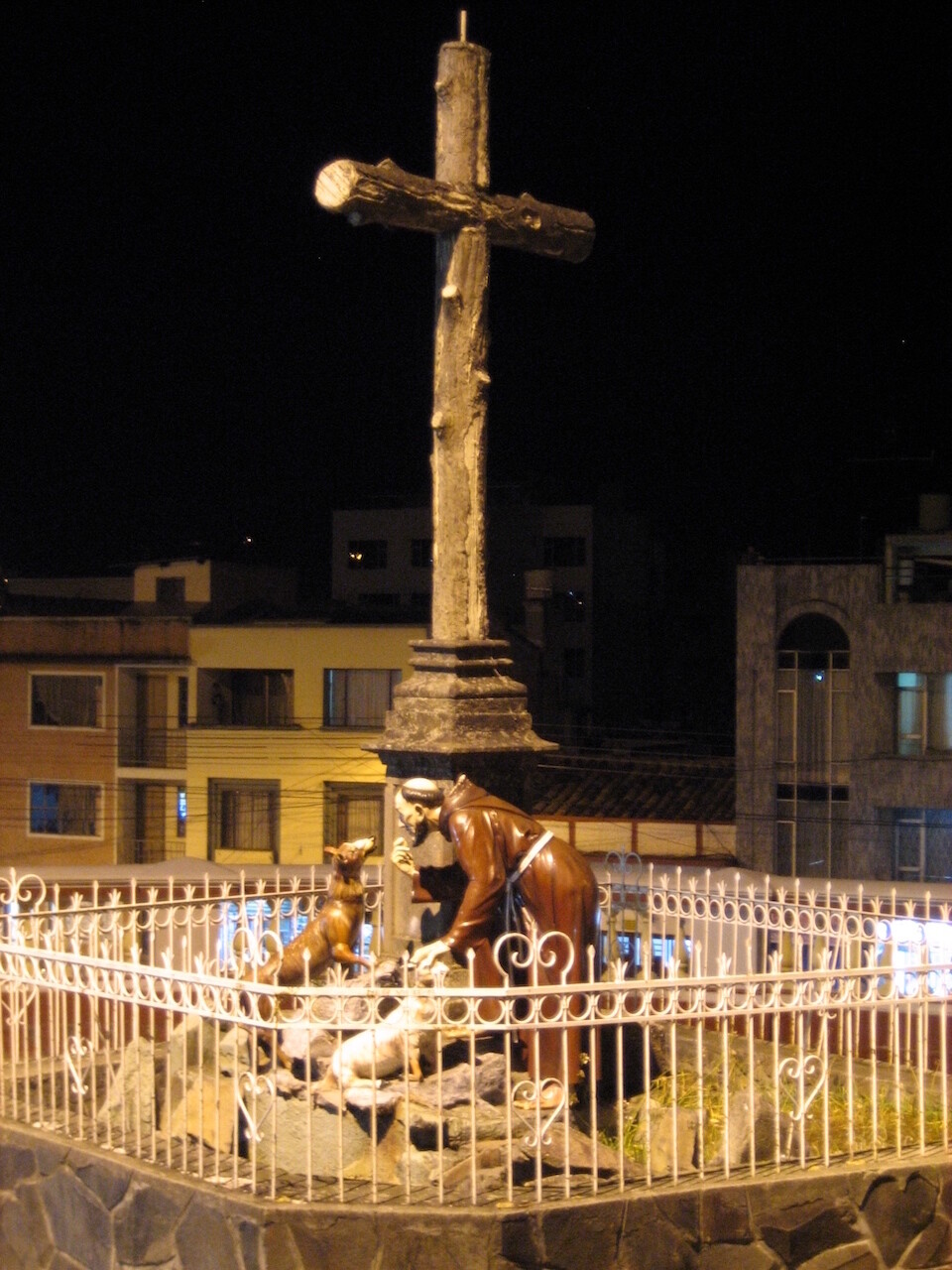
Where there was a sculpture of St. Francis of Assis, the patron saint of animals and the environment.
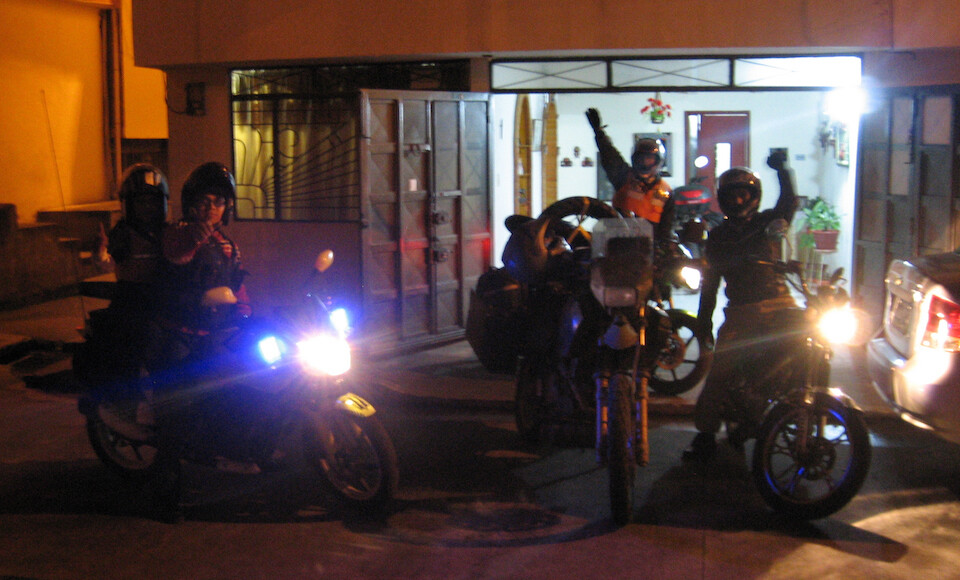
Having dinner at Raul's place before dropping me off at...

Dario's family's home. Dario's two younger brothers, Andres and Alvaro with Luz Dary, Dario's girl friend and her two younger sisters. At night, it was cold here at 2,530 m (8,290 ft) and I got a bit of a headache with all the change in altitude.

The next morning, on the last day of my Colombia visa, Andres offered to accompany me to the Ecuadorean border.
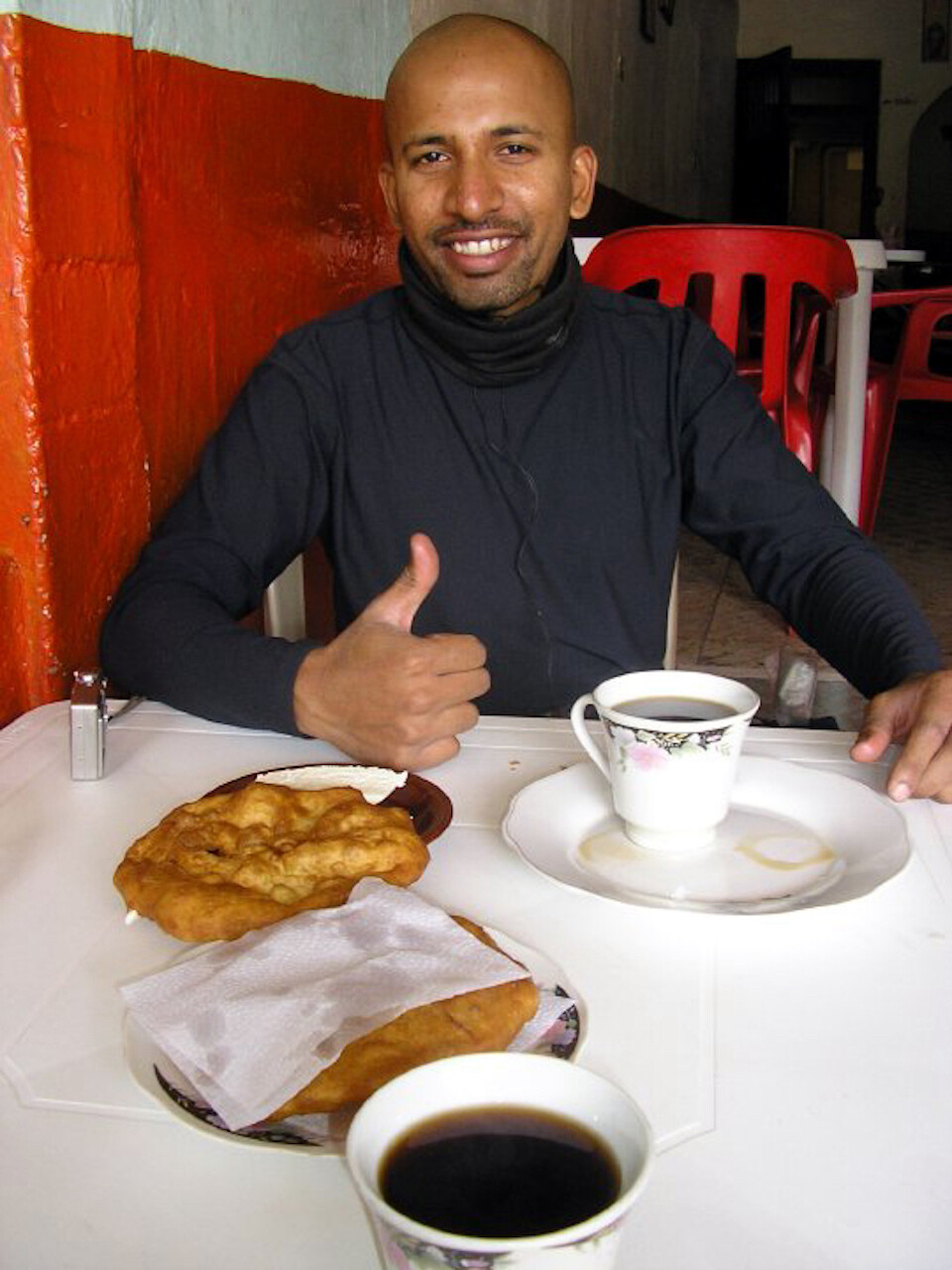
Having some breakfast along the way of a fluffy, fried bread with cheese and coffee.
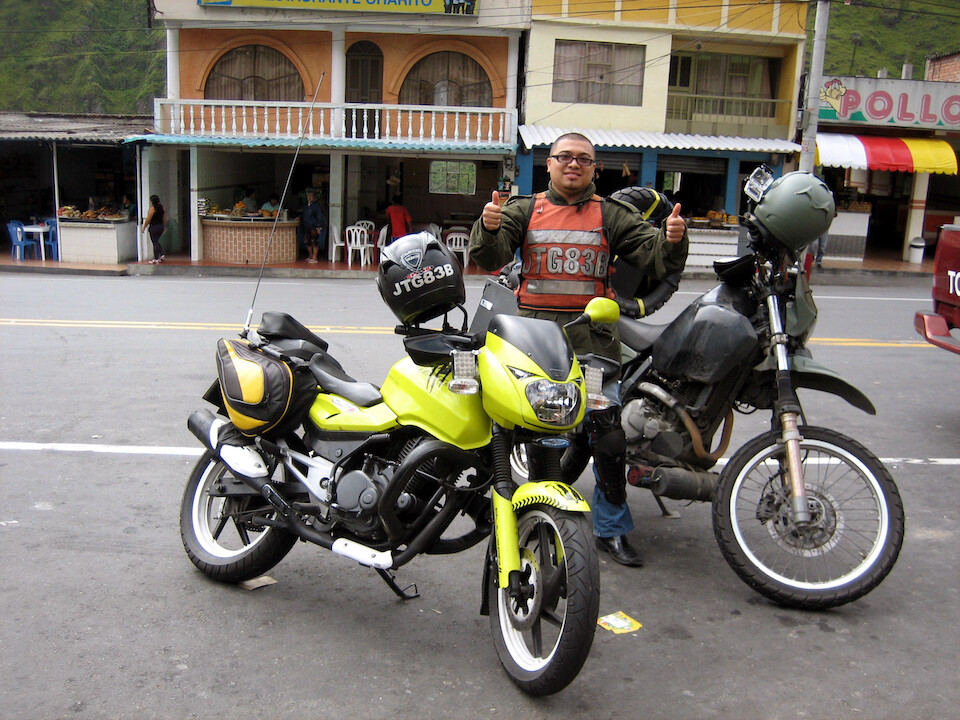
Andres and his good looking Bajaj Pulsar. The Pulsar became well respected after a rider rode one from here through South America, Africa and into India to the main Bajaj factory. Quite a feat on a 200cc bike.
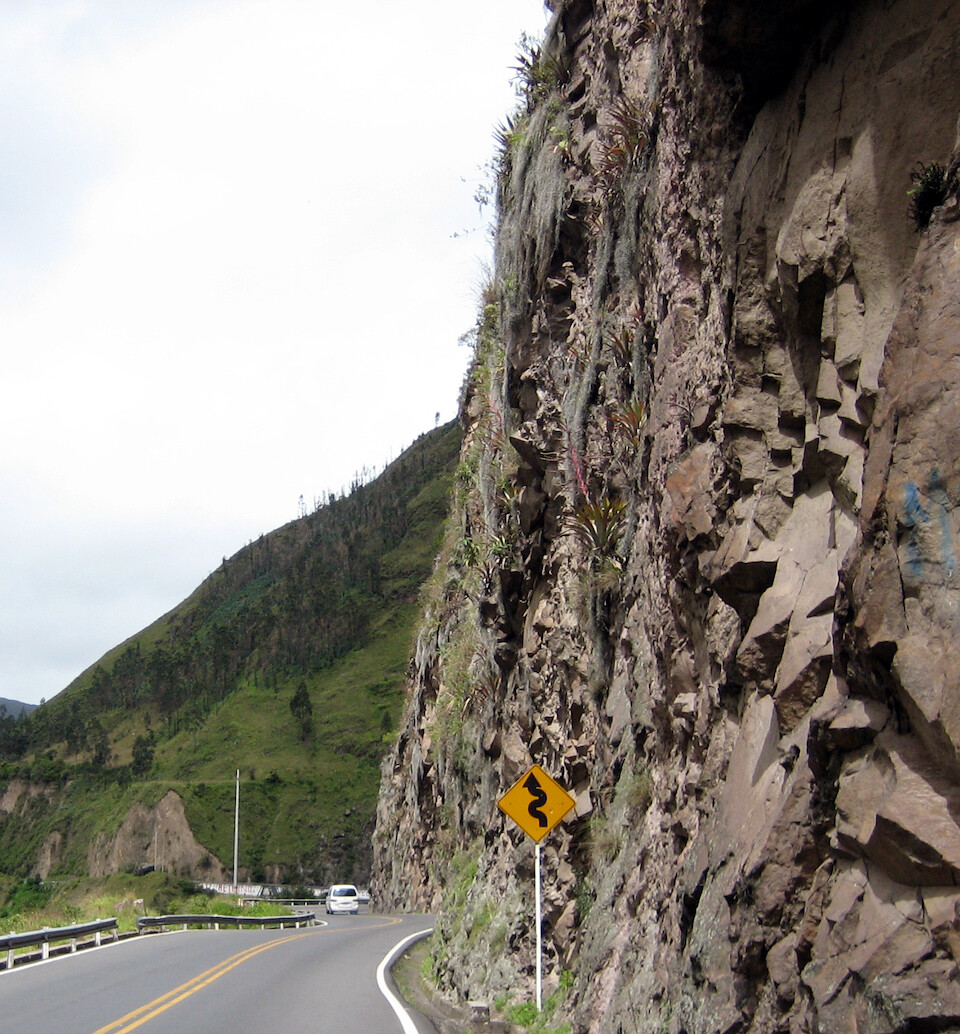
The road from Pasto to Ipiales at the border was fantastic and had great views. It was more of the steep, cliff-hugging variety of twisties.
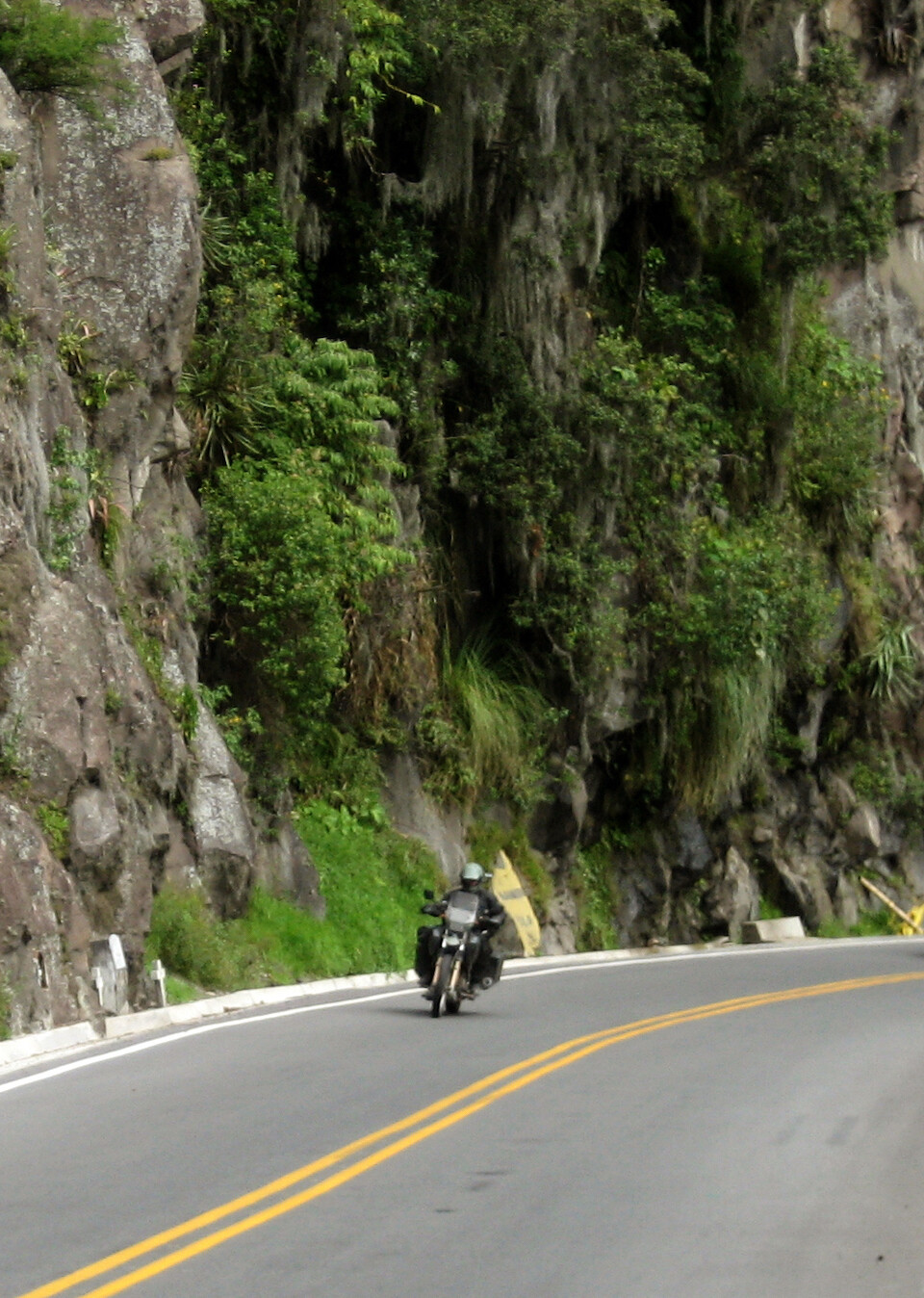
Enjoying the ride to Ipiales. From Pasto the road descends to about 1,700 m (5,660 ft) before climbing back up to 2,950 m (9,820 ft) at Ipiales.

The two bikes on the way to Las Lajas.

The impressive Las Lajas Sanctuary set in a canyon of the Guaitara River, about 10 kms (6 miles) from Ipiales.
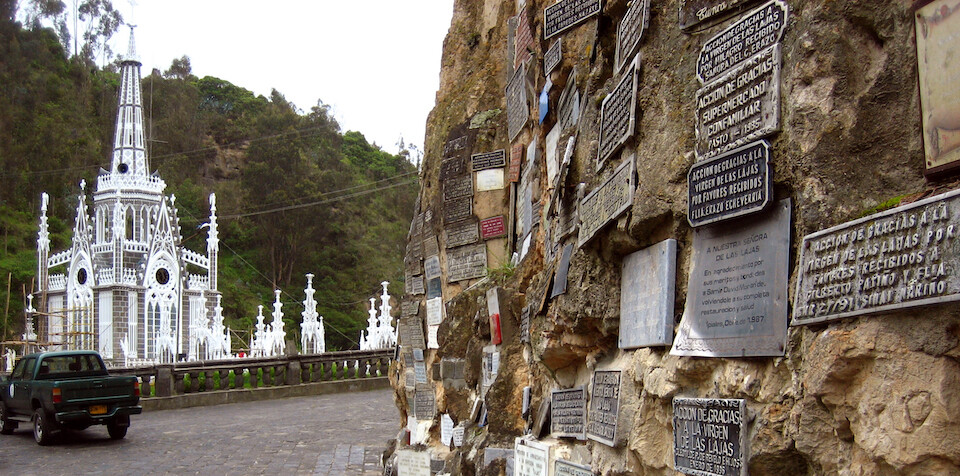
The current church was built from 1916 to 1946 on the exact site that a vision of the Virgin Mary was seen and since then many miracles are purported to have happened to devotees who come and worship at the church. These plaques stuck into the wall leading to the church are thank yous and testimonies of the successful miracles.

The faithful traveling from far and near to have their prayers answered.
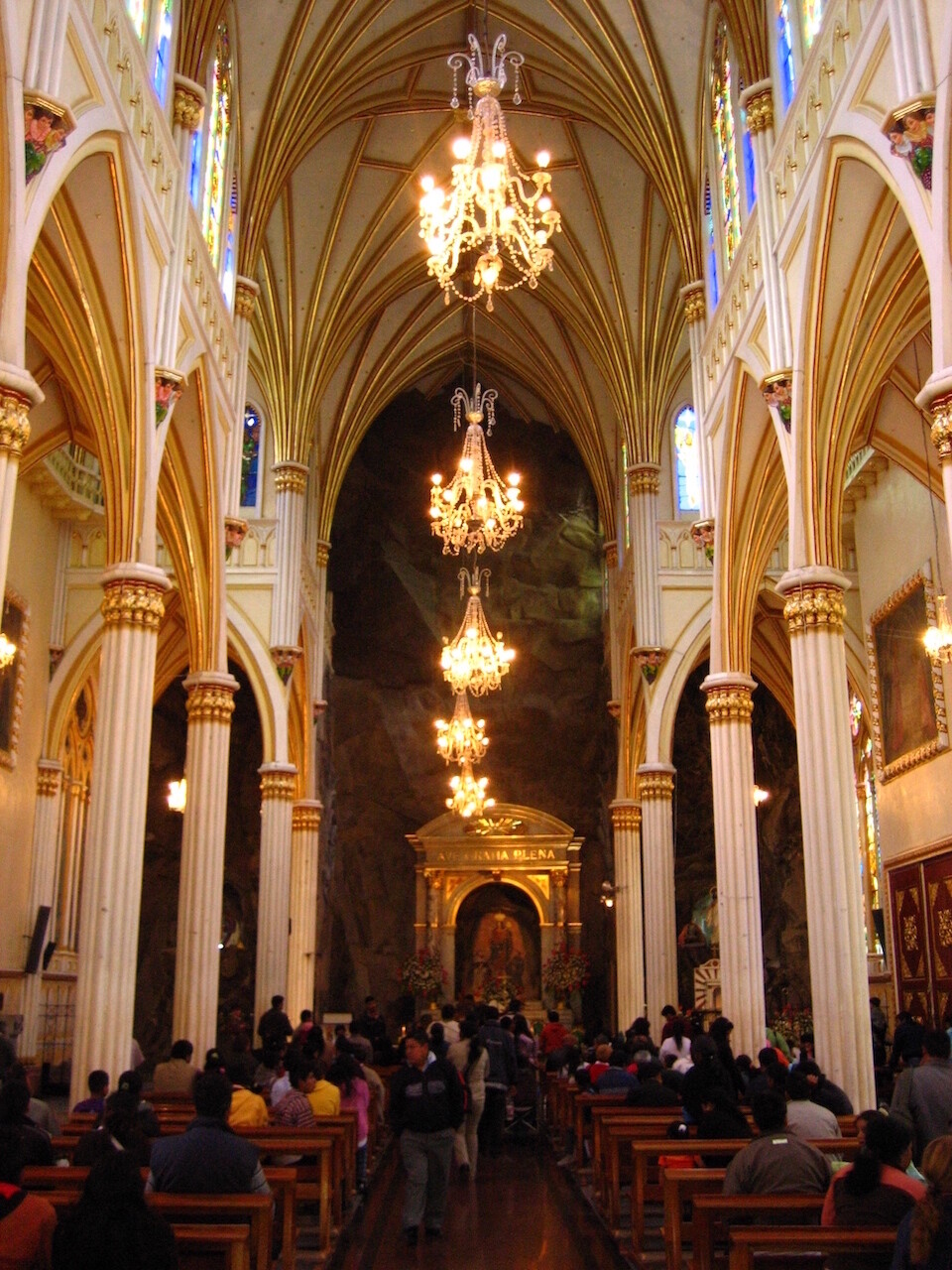
Inside the beautiful chapel, which is built right up against the rock face with the shrine where the image of the Virgin Mary was seen in 1754.

The engineering feat of building a church in a steep canyon is quite impressive.
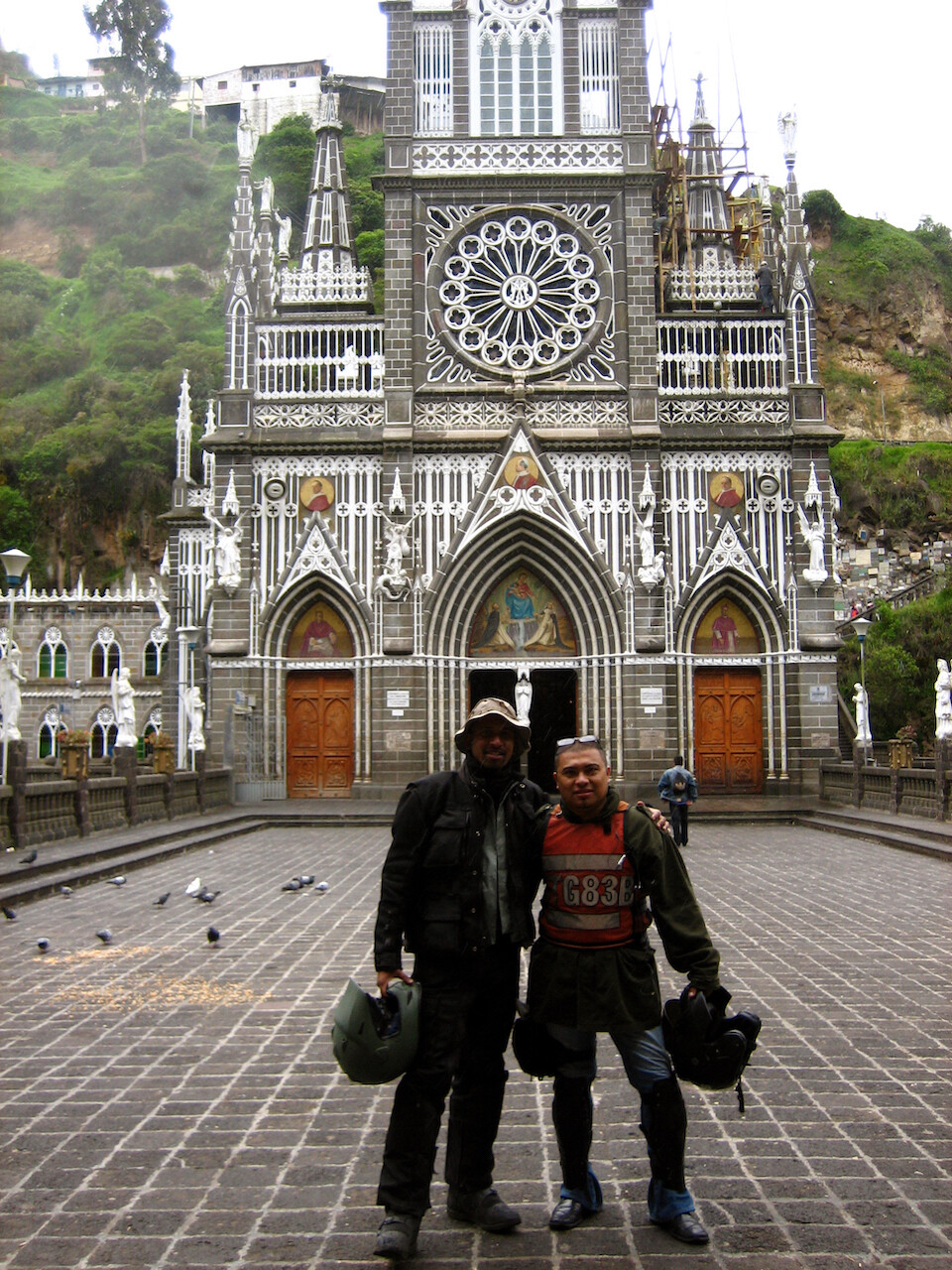
With my guide for the day, Andres at Las Lajas Sanctuary.
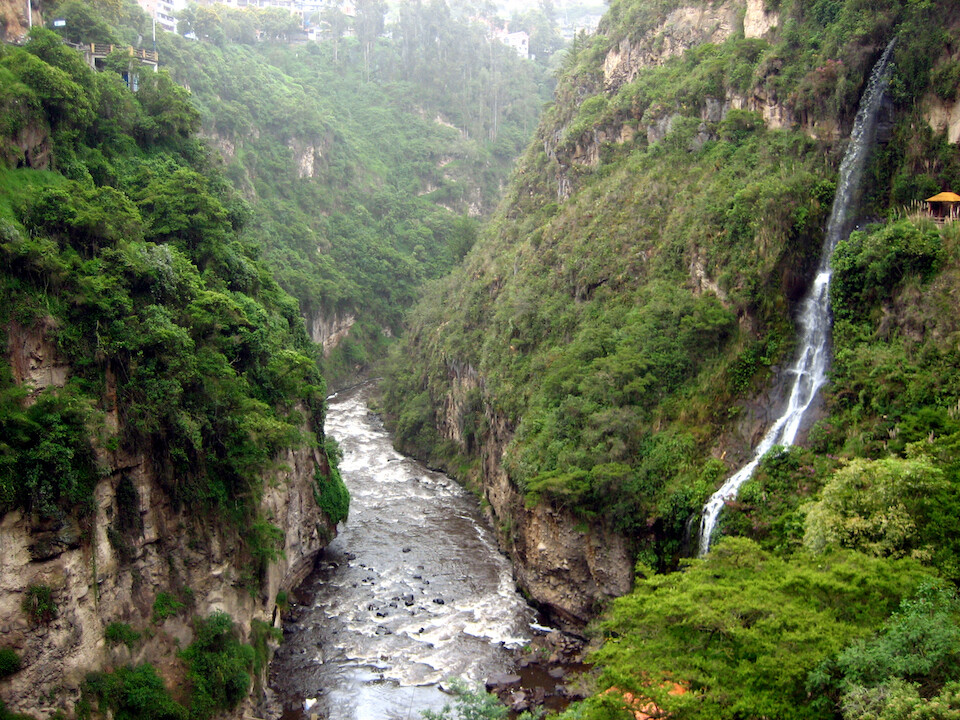
Besides the church, the surrounding scenery is worth the visit.
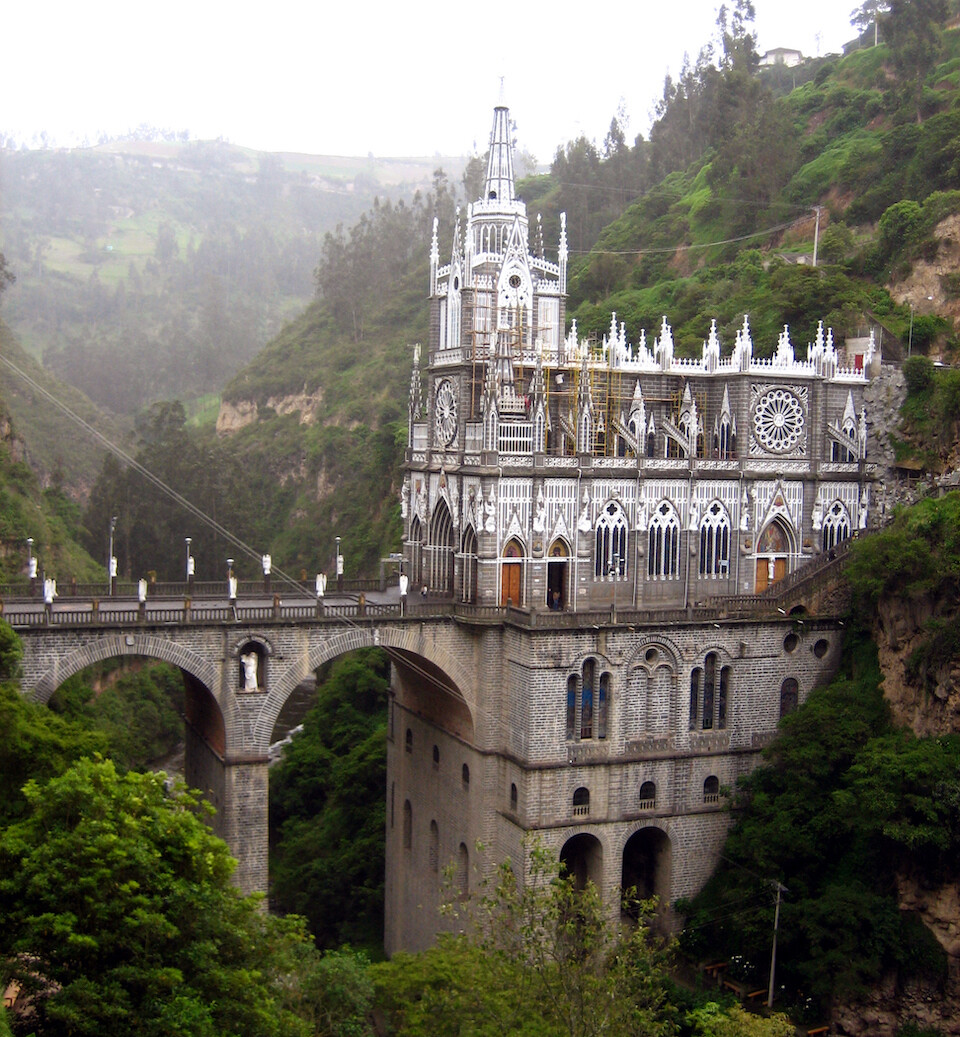
Las Lajas Sanctuary with its foundations heading down to the canyon floor.
Three weeks was too short for Columbia, but I enjoyed my time there thoroughly, especially meeting up with all the local bikers. The people are very warm and welcoming and are proud to show off their country. I will return someday to spend more time exploring this wonderful country.
Next: Ecuador, Part 1: Quito and Quilotoa
Previous: Colombia, Part 3: Zona Cafetera